This trip originally took place in April 2018 with the goal searching for my final American Owl species, the Ferruginous Pygmy-Owl. A first blog installment was published in June, and a draft of this final installment was started in July. Only now, almost a year after the trip, have I concluded this story. Whether it was the busy-ness of life or the overwhelming amount of material from this trip alone, I just never got around to writing it up. Though the blog has been quiet for a long time, many OTHER birding adventures have also been enjoyed. Hopefully, they will also make it on to the blog soon.
We woke up Sunday morning from our discount Sierra Vista hotel, saying goodbye to the same desk clerk who checked us in just a few hours prior. There was urgency. We had to get to the Ash Canyon B&B to catch the Montezuma Quail show. The owner, Mary Jo, had been posting regularly about the appearance of a pair of these Quail that had been coming to her yard. ‘Yard’ is hardly an accurate term. It is more like a bird sanctuary. Mary Jo has dozens of feeders set up to accommodate nectar drinkers, seed eaters, and ground eaters along with chairs and blinds to accommodate the birders and photographers willing to pay the fee just to sit and watch. And for reliable Montezuma Quail, I was more than willing to throw my money in the jar on the gate. This is a bird I had honestly put in the “Yeah Right, Like I’ll Ever See That” Category. But now we had a chance, and a good chance too if we could make it on time for the early morning once-and-done appearance. We arrived and Mary Jo was going about her morning ritual of filling feeders and doing whatever else she does to create such awesomeness. In whispers, we learned that the Quail had not yet shown themselves. This was good news. She directed us where to sit, where to watch for them along her fence, and to be quiet and don’t move! We followed her instructions to a T. There is indeed much to occupy one’s attention while you wait for a rare bird–Mexican Jays, Acorn Woodpeckers, etc. Everything is worth checking out, especially if one turns out to be an unexpected lifer.
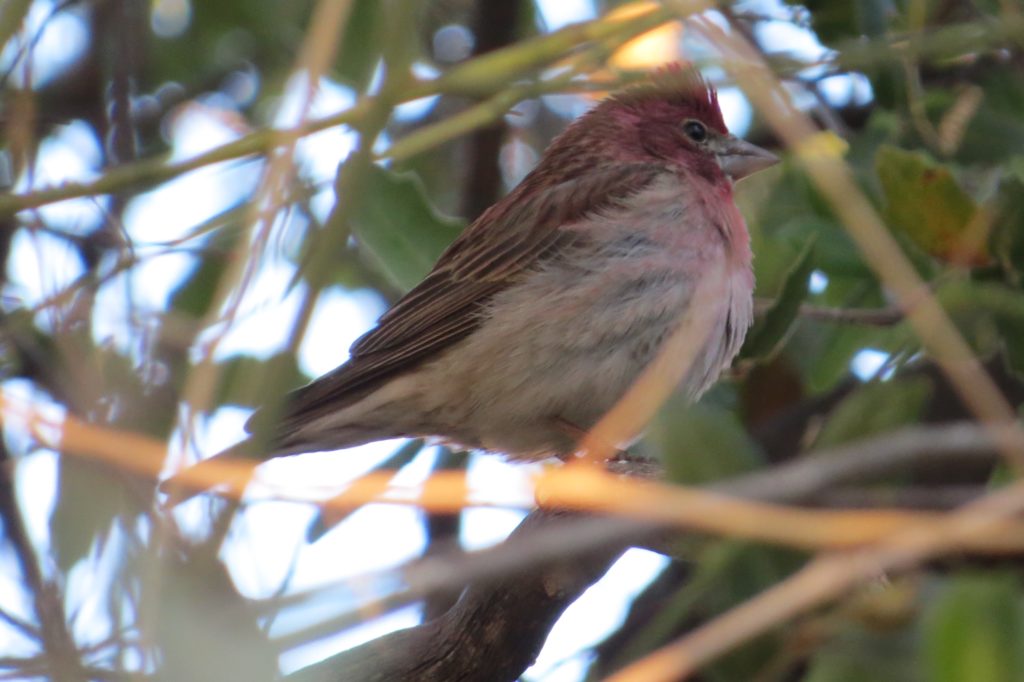
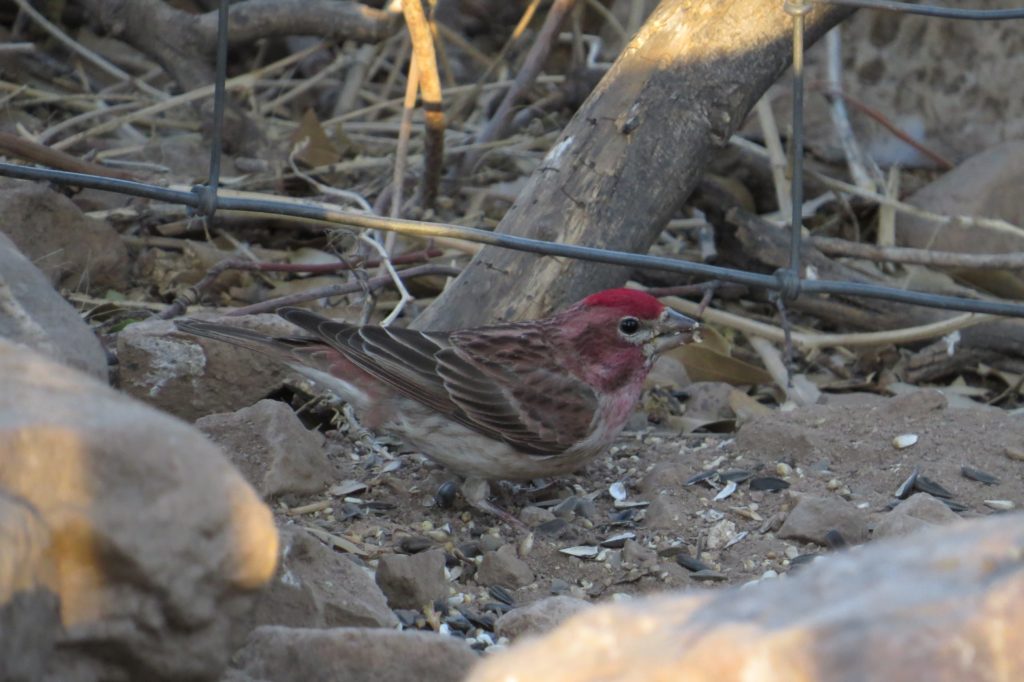 We barely had any time to enjoy the Cassin’s Finch warm-up band before the real head-banging act materialized suddenly, shocking and awing a crowd too afraid to move or breathe, lest the show be over for good.
We barely had any time to enjoy the Cassin’s Finch warm-up band before the real head-banging act materialized suddenly, shocking and awing a crowd too afraid to move or breathe, lest the show be over for good.
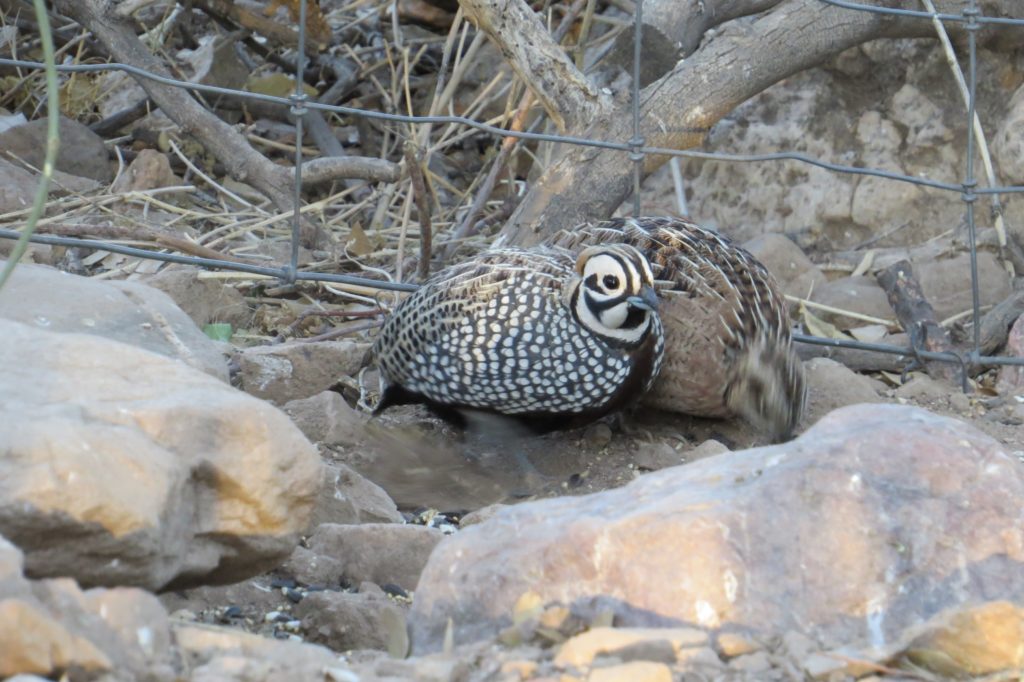
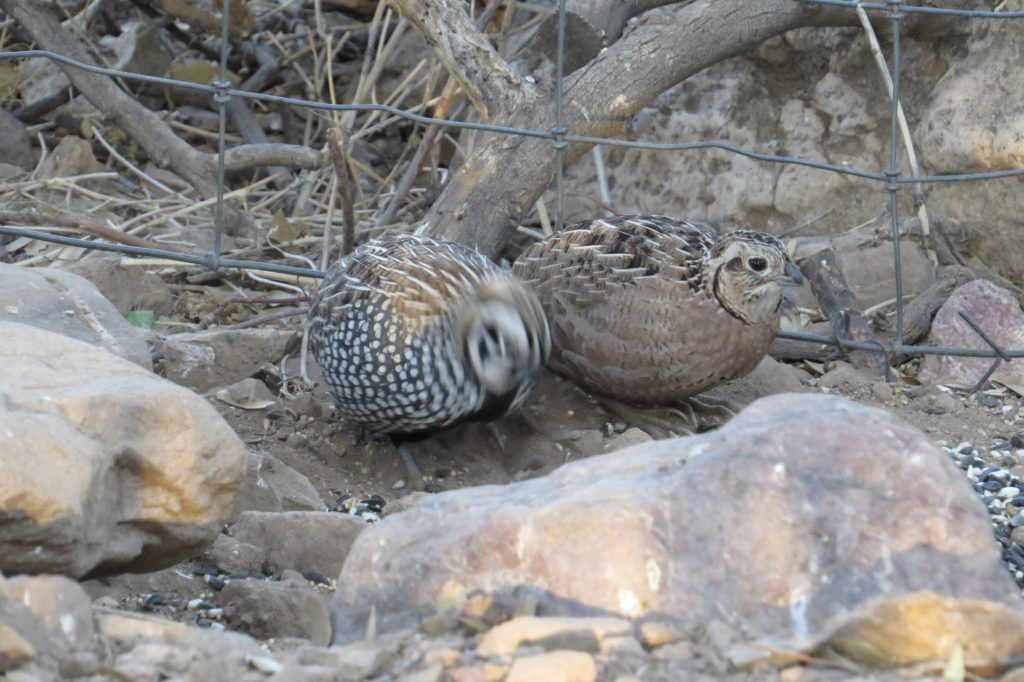
It was stunning, a quintessential SE AZ birding moment.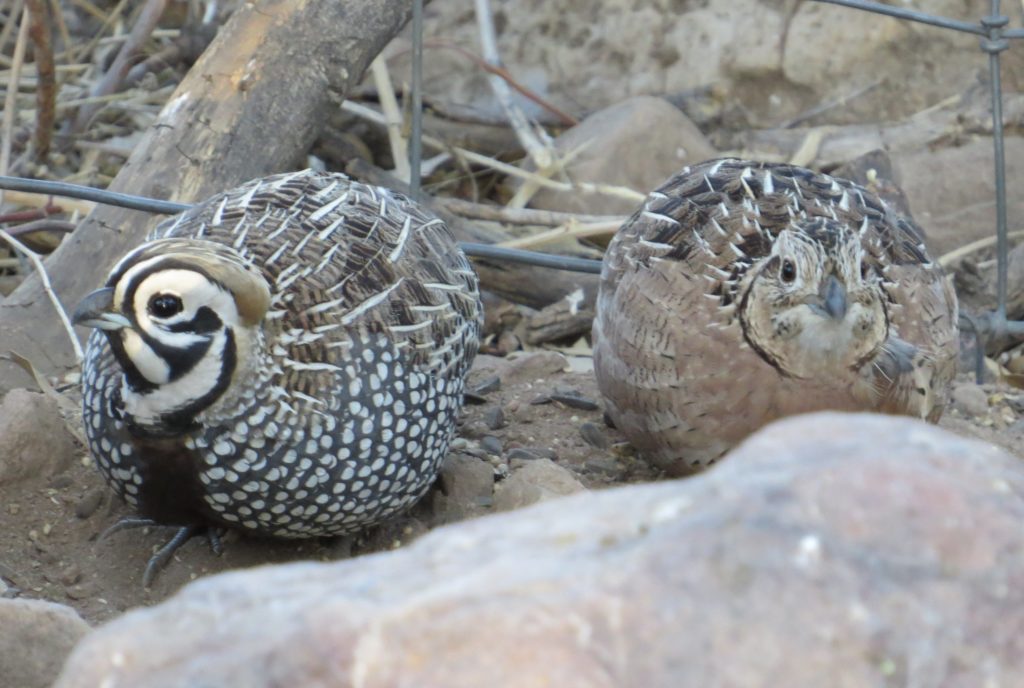
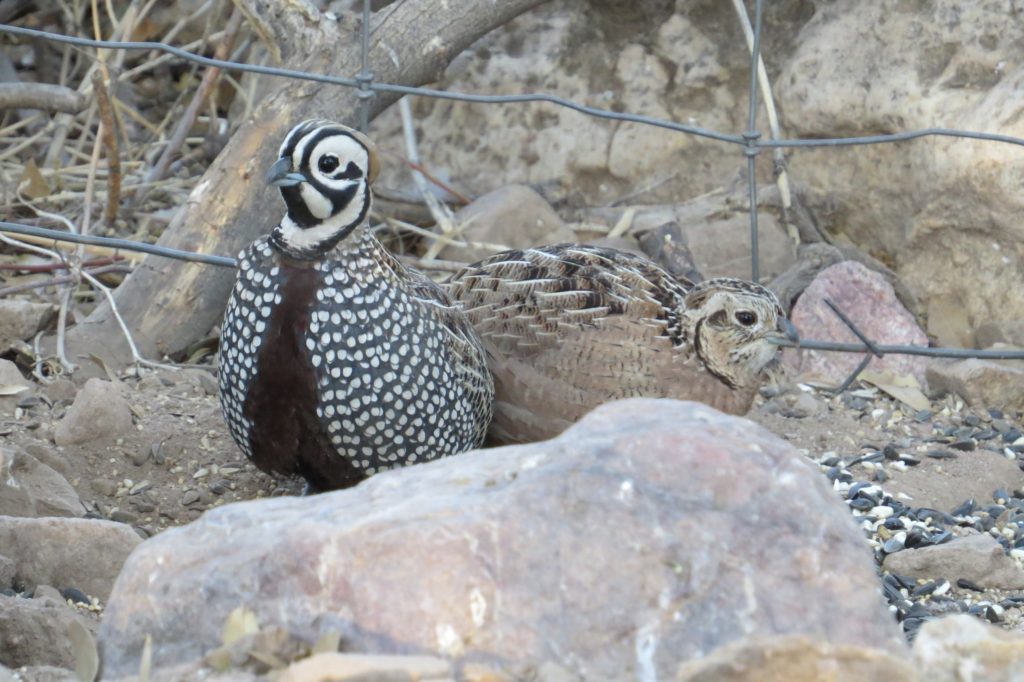
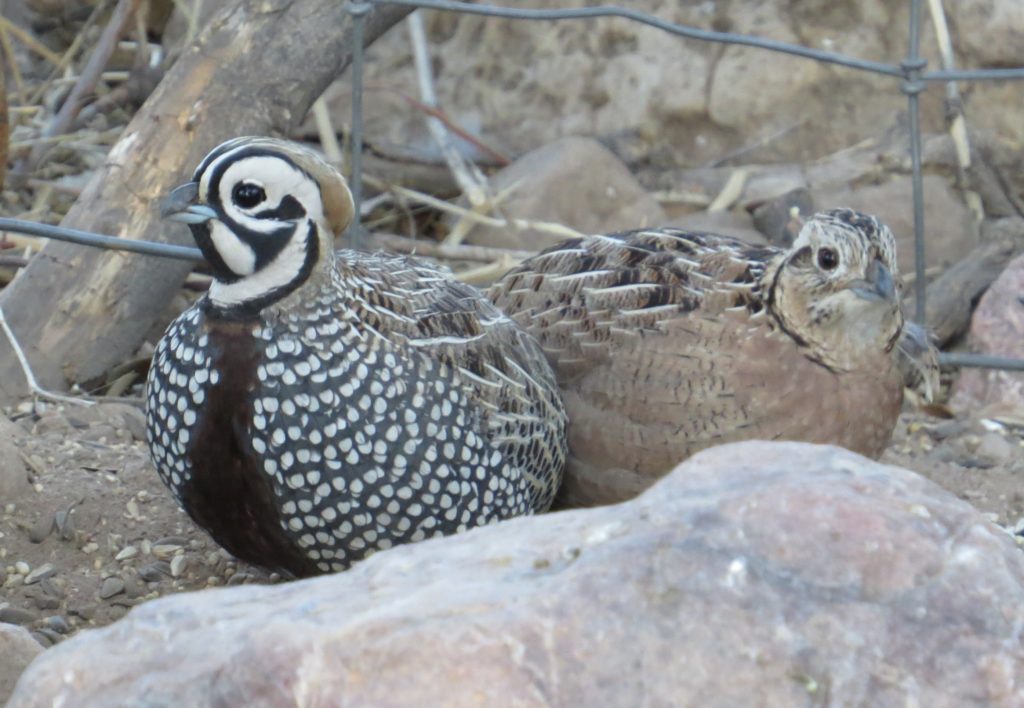 It was not the Ferruginous Pygmy-Owl I craved, but the Montezuma Quail was one of those birds that can make an entire trip. Not only was it a key lifer for Steve and me, but this was Tommy’s first time photographing this species. It was a high for the entire group.
It was not the Ferruginous Pygmy-Owl I craved, but the Montezuma Quail was one of those birds that can make an entire trip. Not only was it a key lifer for Steve and me, but this was Tommy’s first time photographing this species. It was a high for the entire group.
When we left Mary Jo’s, we started talking about another resident Quail species, the Scaled Quail. It turns out we were in close proximity to where they could be found. Tommy took us to an open grassland area near the foothills of the Huachucas where he had the species previous years. We ended up hearing one calling from a large, fenced in government vehicle lot. Eventually we got eyes on it, but ominous warnings on government signs kept us from trespassing for closer looks, even though the place seemed abandoned.
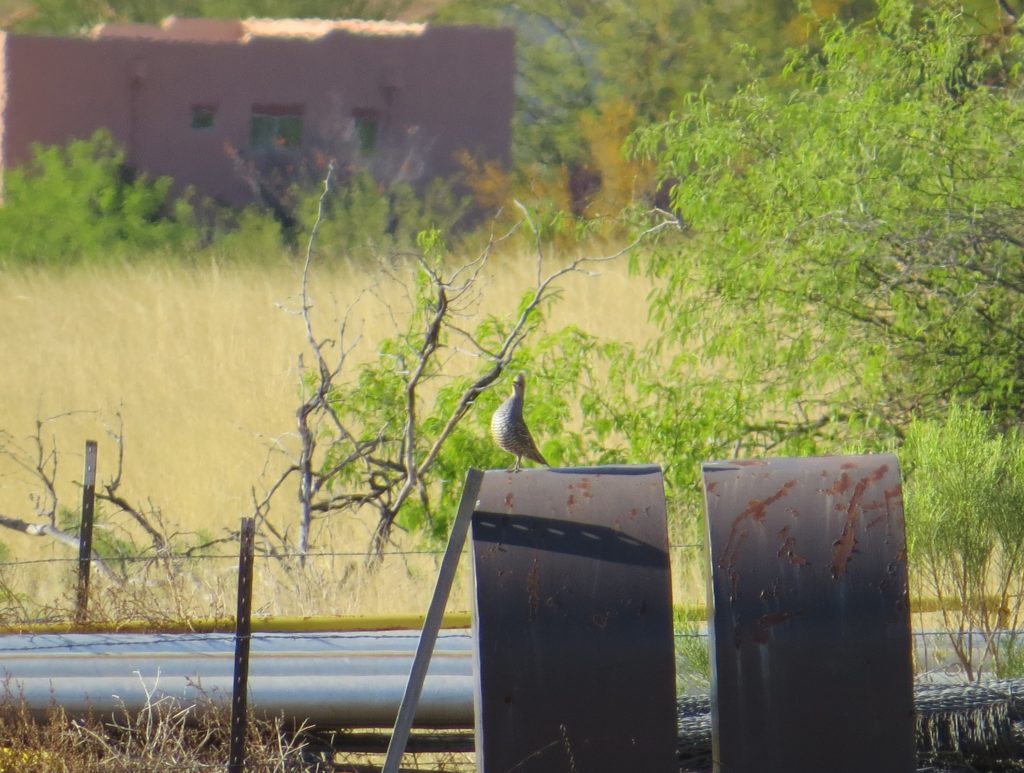 On our to-do list was to hit up Miller Canyon next to try to get Steve a Spotted Owl lifer, among others. This whole time that Fan-tailed Warbler report was still on all of our minds. Strangely, there had been no word the previous day or this morning. It was odd considering it was such a mega rarity. I finally heard from Chris Rohrer that the Warbler had been seen Saturday by numerous people AND that it was still there this morning. We decided to do Miller Canyon as planned since we were so close. What hadn’t been decided yet was if we were going after the Warbler. A chase to the Chiricahuas in far southeastern AZ would mean the FEPO plans would have to be nixed–we had originally planned to try for FEPO again Sunday night and Monday morning before we flew out. Though the Warbler would have been a lifer for Tommy, he graciously said the decision was mine to continue with the FEPO plans or abandon them. Steve also said it didn’t matter to him as he was enjoying a plethora of new birds wherever we went. As we hiked up Miller Canyon, I didn’t know what to do. It made it tough for me to enjoy some of the canyon’s residents, many of which were lifers for Steve.
On our to-do list was to hit up Miller Canyon next to try to get Steve a Spotted Owl lifer, among others. This whole time that Fan-tailed Warbler report was still on all of our minds. Strangely, there had been no word the previous day or this morning. It was odd considering it was such a mega rarity. I finally heard from Chris Rohrer that the Warbler had been seen Saturday by numerous people AND that it was still there this morning. We decided to do Miller Canyon as planned since we were so close. What hadn’t been decided yet was if we were going after the Warbler. A chase to the Chiricahuas in far southeastern AZ would mean the FEPO plans would have to be nixed–we had originally planned to try for FEPO again Sunday night and Monday morning before we flew out. Though the Warbler would have been a lifer for Tommy, he graciously said the decision was mine to continue with the FEPO plans or abandon them. Steve also said it didn’t matter to him as he was enjoying a plethora of new birds wherever we went. As we hiked up Miller Canyon, I didn’t know what to do. It made it tough for me to enjoy some of the canyon’s residents, many of which were lifers for Steve.
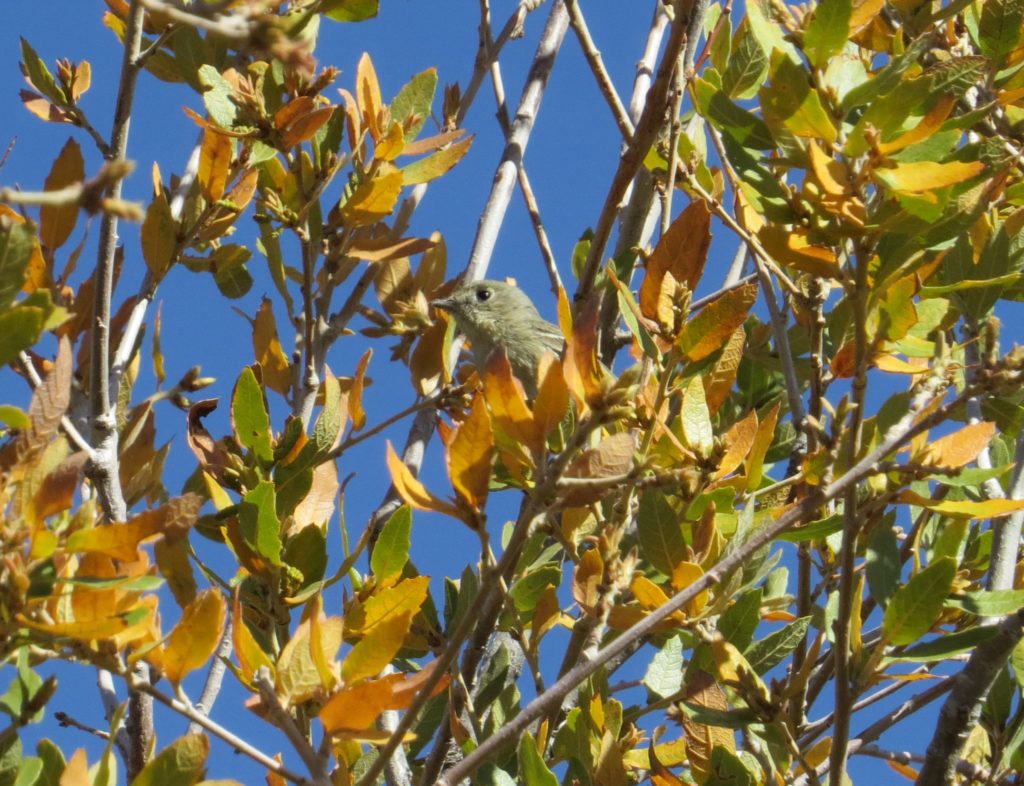
Hutton’s Vireo
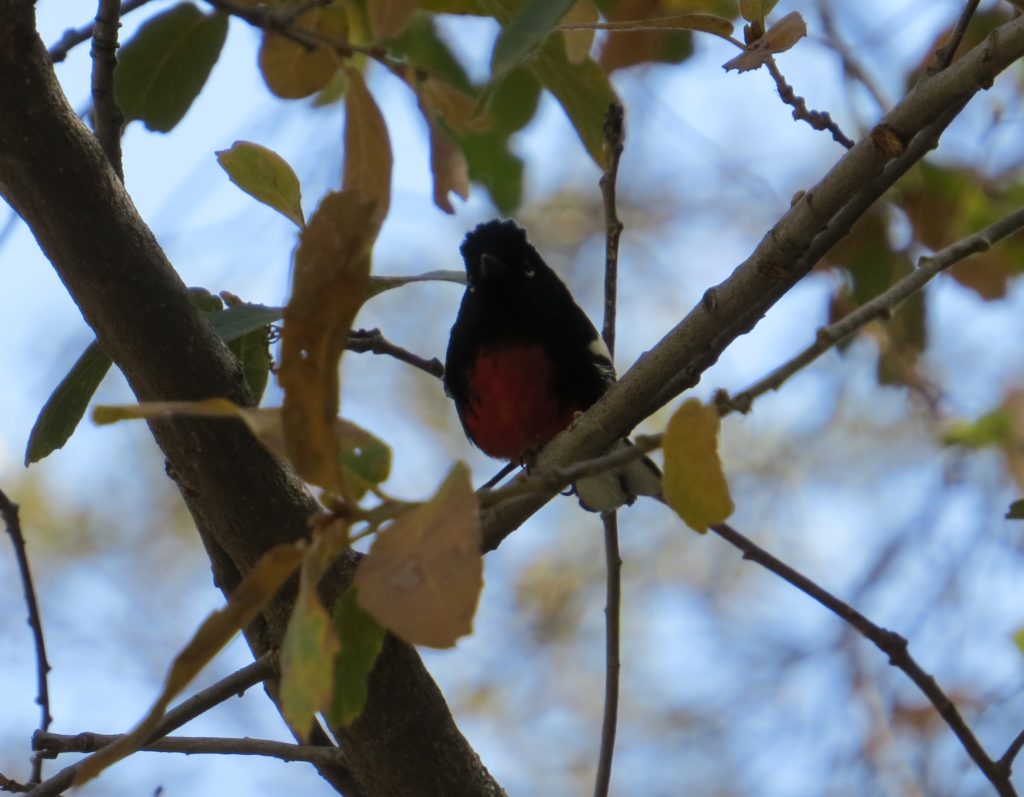
Painted Redstart
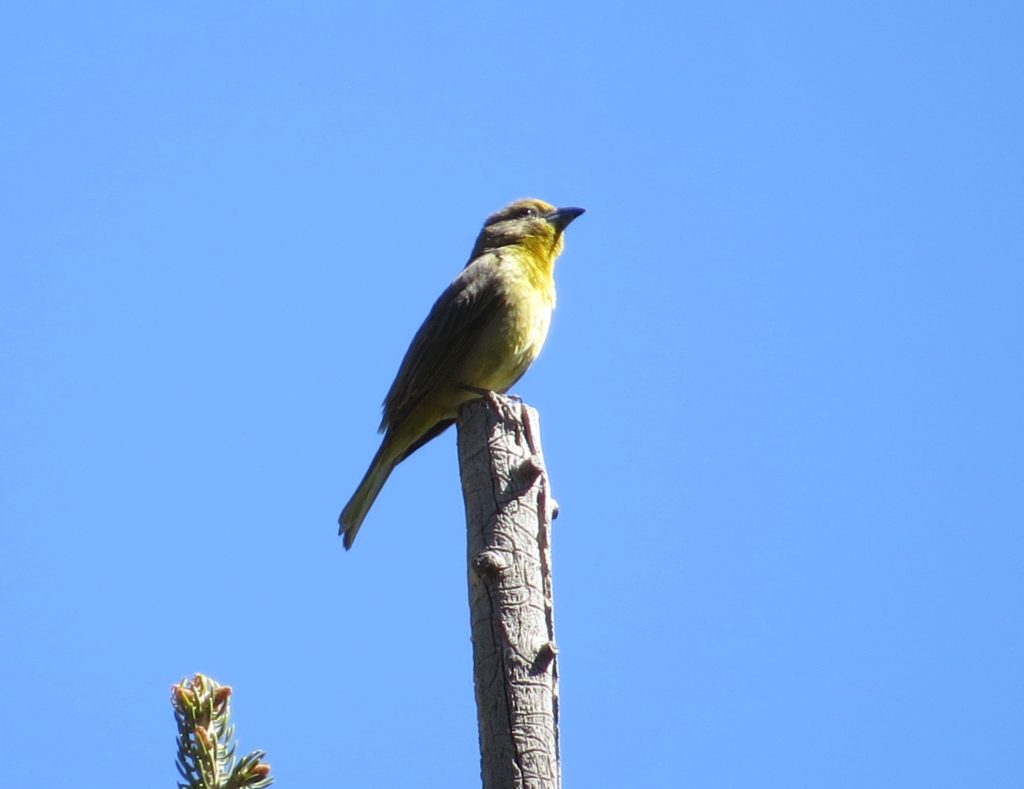
Hepatic Tanager
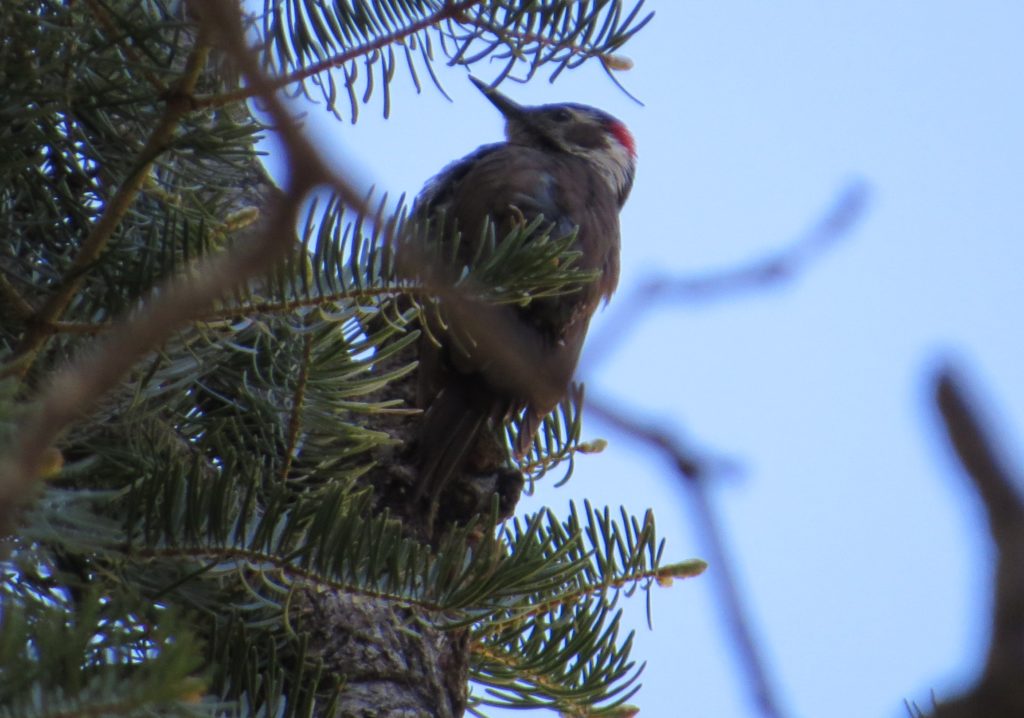
Arizona Woodpecker
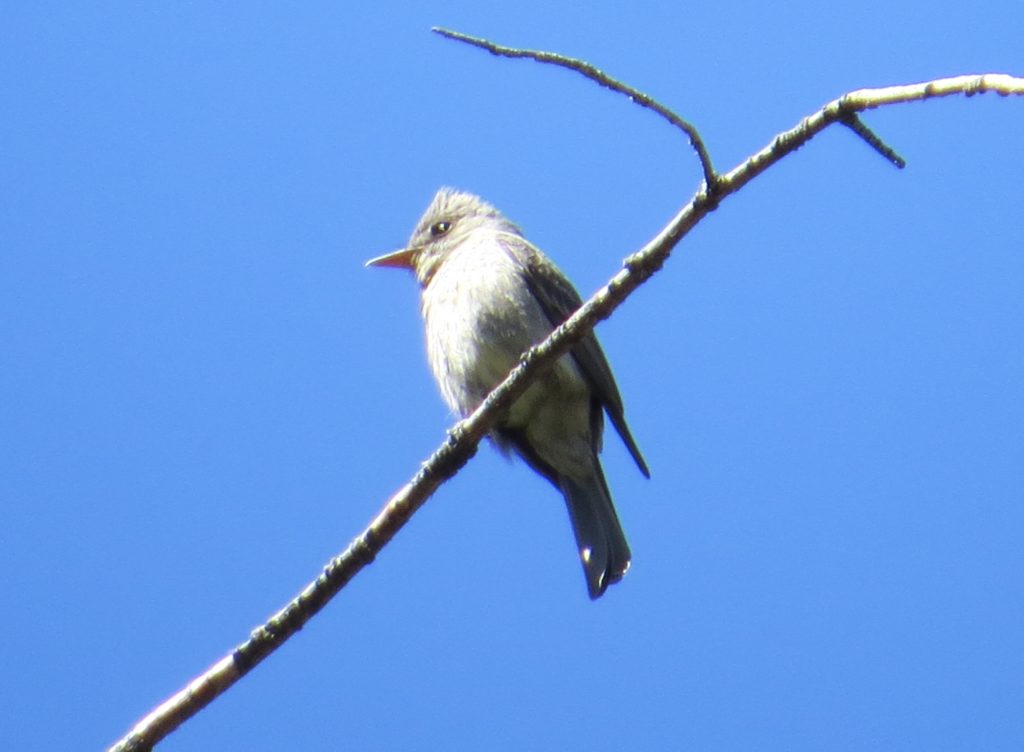
Greater Pewee
Unfortunately for Steve, the reliable Spotted Owls were not so reliable this day. Despite a solid effort of scanning the trees in the narrow canyon, we could not find them. It was time to hike down canyon and finally make a decision about what to do regarding this Fan-tailed Warbler. A quiet, western empid struck a pose and put the dilemma on brief pause as we pondered its ID. Hammond’s or Dusky?
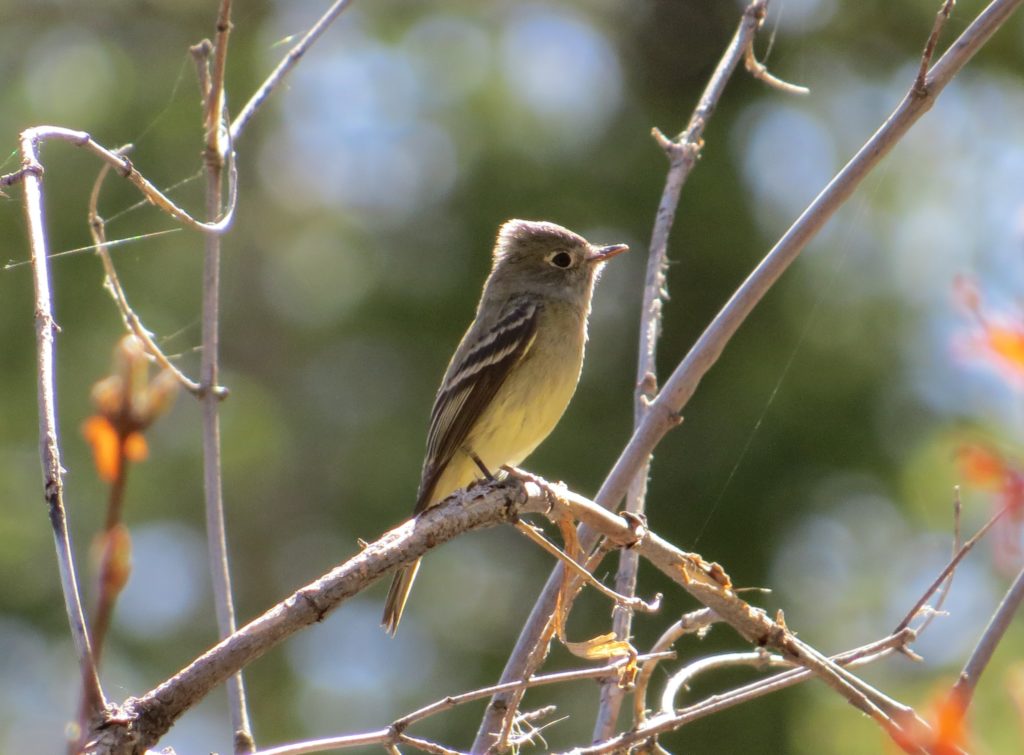 Another ID question prolonged the decision. Anybody know what species this lizard is?
Another ID question prolonged the decision. Anybody know what species this lizard is?
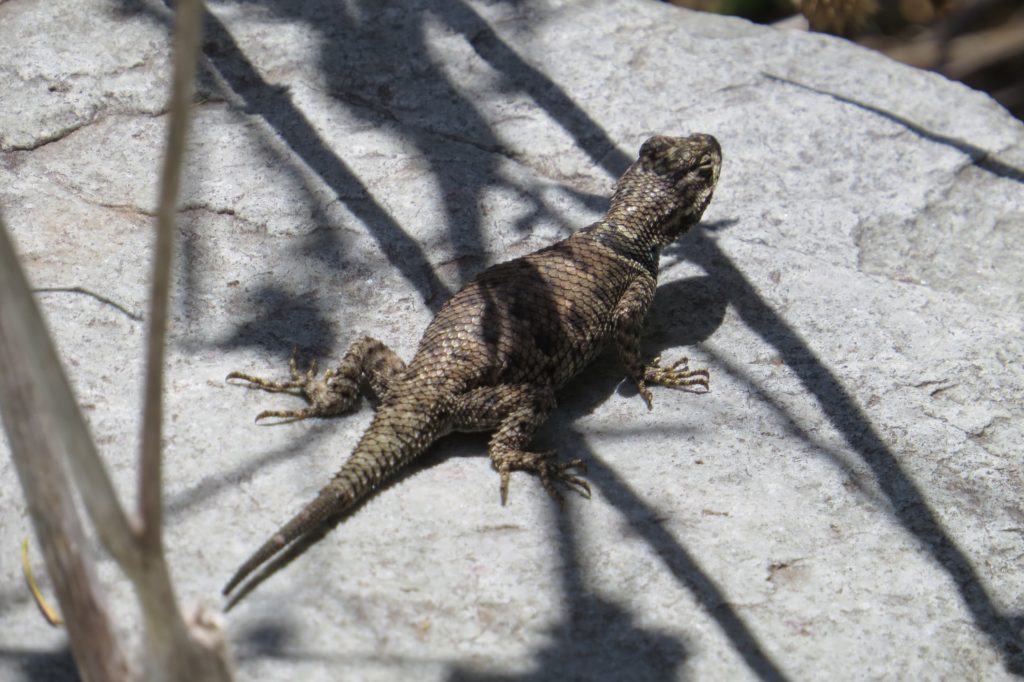
As we started to leave Miller Canyon behind us, the trip before us became more clear in my head. I knew FEPO would be a longshot. We dipped the day before, and Tommy hadn’t seen any on his scouting trips leading up to my trip. Moreover, FEPO is pretty easy to get in south Texas on the King Ranch. I couldn’t pass up on the opportunity to chase a phenomenal Warbler lifer for all of us. I mean, how often does Tommy get a chance to lifer in Arizona? The decision really was a no-brainer even if it was a bit tough to give up on the main goal. That’s birding, though. You have to take advantage of targets of opportunity, especially of this magnitude. When I talked with Tommy and Steve and shared these thoughts, I’ll never forget how the smile grew on Tommy’s face. Yep, it was the right decision.
So we left the Huachucas and were off to the Chiricahuas, a 2+ hour trip. Tommy was so confident that we would find the Warbler that we even stopped for a sit-down lunch along the way. The site of the Fan-tailed Warbler was the yard of Rick Taylor, a well-known guide and field guide author, and Rick’s yard was located in a lush canyon known as Whitetail Canyon in the foothills of the Chiris. When we arrived at Rick’s yard, we had trouble finding a place to park. That was a moot point because we saw the large, bright star of the show in Rick’s lawn right out the car window! We did get parked so we could enjoy this lifer up close as it walked about the lush green grass in Rick’s magical bird yard. According to Rick, this behavior is atypical of this ABA Code-4 species. Normally it is more skulky.
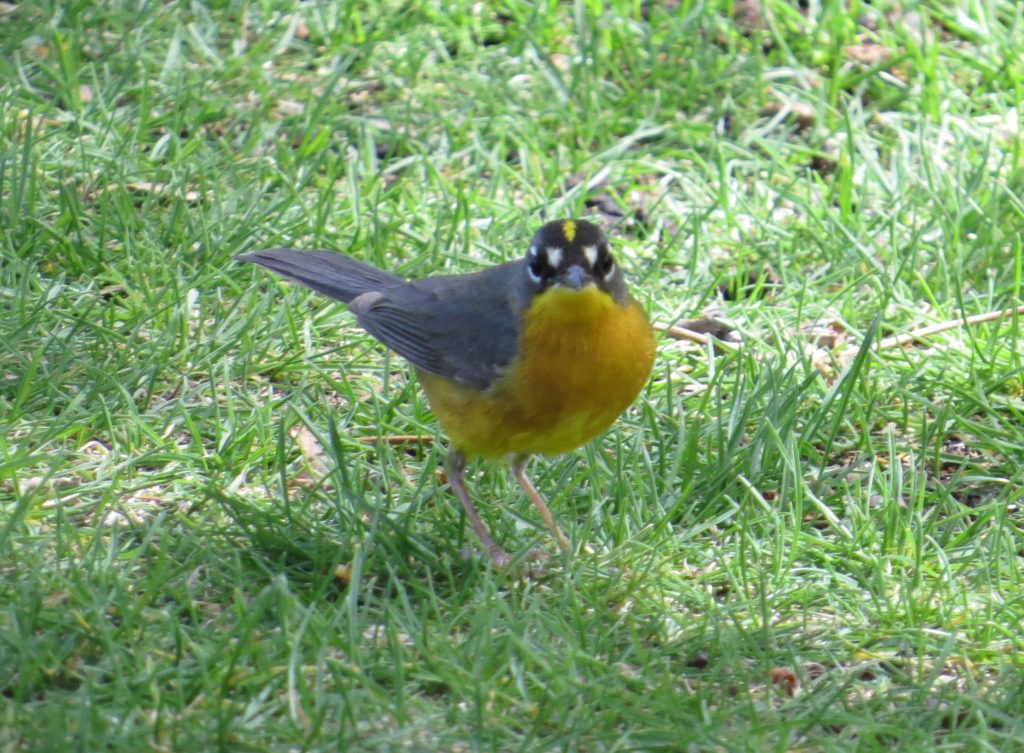
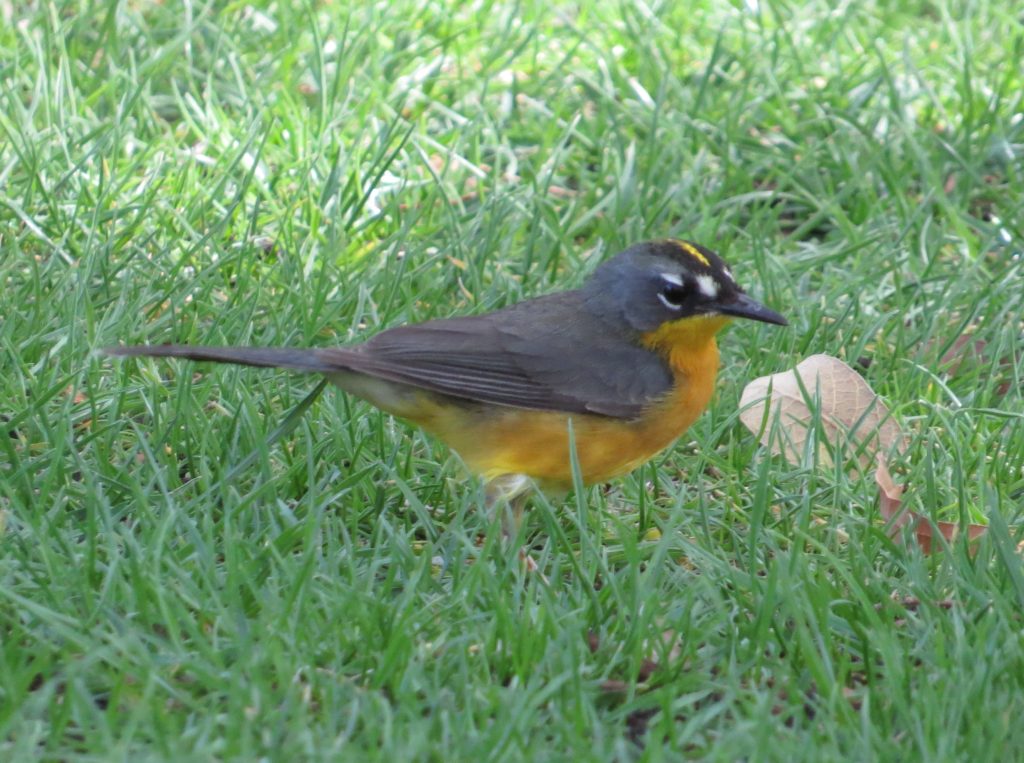 If the Fan-tailed Warbler weren’t enough, the regulars of Rick’s yard were worthy of their own awe. The place was positively buzzing with bird activity. Among the many species of birds were a couple more lifers for me, the bulky Blue-throated Hummingbird and a Calliope Hummingbird. Both were quick sightings that didn’t allow for photos. This gorgeous male Scott’s Oriole was cooperative, though. It was a nice redemptive photo from my lifer butt-shot in Hunter Canyon a few years ago.
If the Fan-tailed Warbler weren’t enough, the regulars of Rick’s yard were worthy of their own awe. The place was positively buzzing with bird activity. Among the many species of birds were a couple more lifers for me, the bulky Blue-throated Hummingbird and a Calliope Hummingbird. Both were quick sightings that didn’t allow for photos. This gorgeous male Scott’s Oriole was cooperative, though. It was a nice redemptive photo from my lifer butt-shot in Hunter Canyon a few years ago.
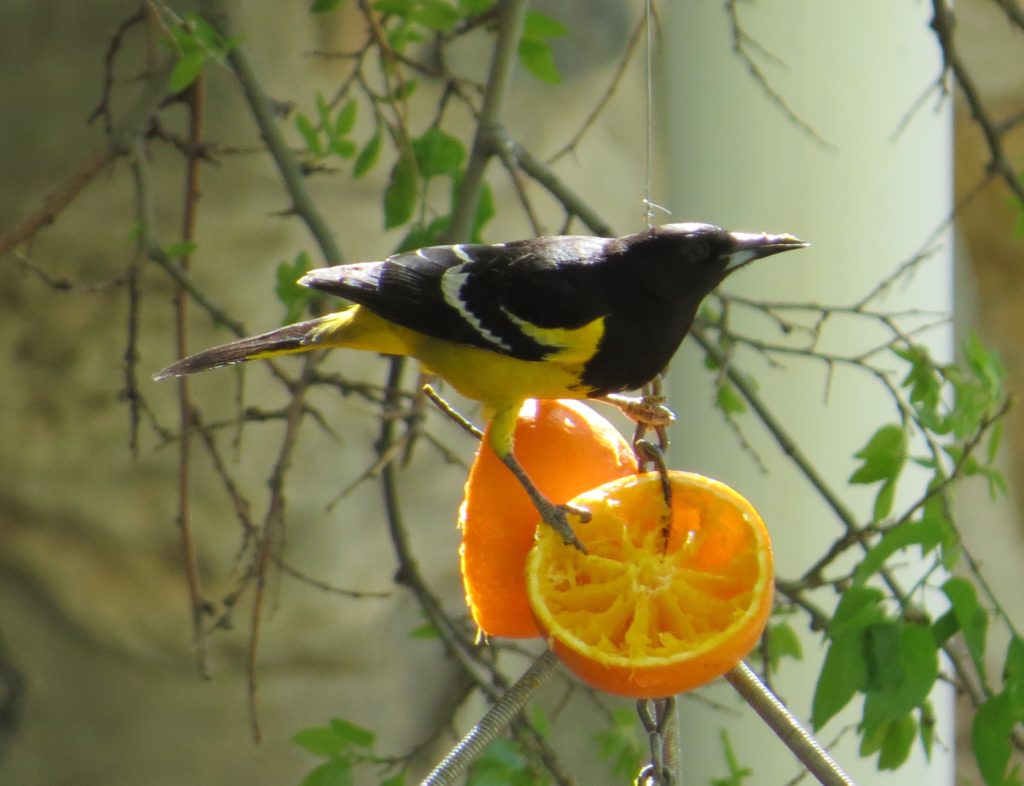 While we were at Rick’s yard visiting with Rick and his wife, there was another young birder there from New Mexico. I forget his name, but it was this kid’s 14th birthday, and his parents had driven him several hundred miles for his birthday to see this mega rarity. Cool parents, huh? The kid was no slouch birder either as he was identifying birds left and right. In fact, as we were leaving, he spotted two raptors overhead and announced they were Zone-tailed Hawks! That was a lifer for Steve and me and one that we were hoping for.
While we were at Rick’s yard visiting with Rick and his wife, there was another young birder there from New Mexico. I forget his name, but it was this kid’s 14th birthday, and his parents had driven him several hundred miles for his birthday to see this mega rarity. Cool parents, huh? The kid was no slouch birder either as he was identifying birds left and right. In fact, as we were leaving, he spotted two raptors overhead and announced they were Zone-tailed Hawks! That was a lifer for Steve and me and one that we were hoping for.
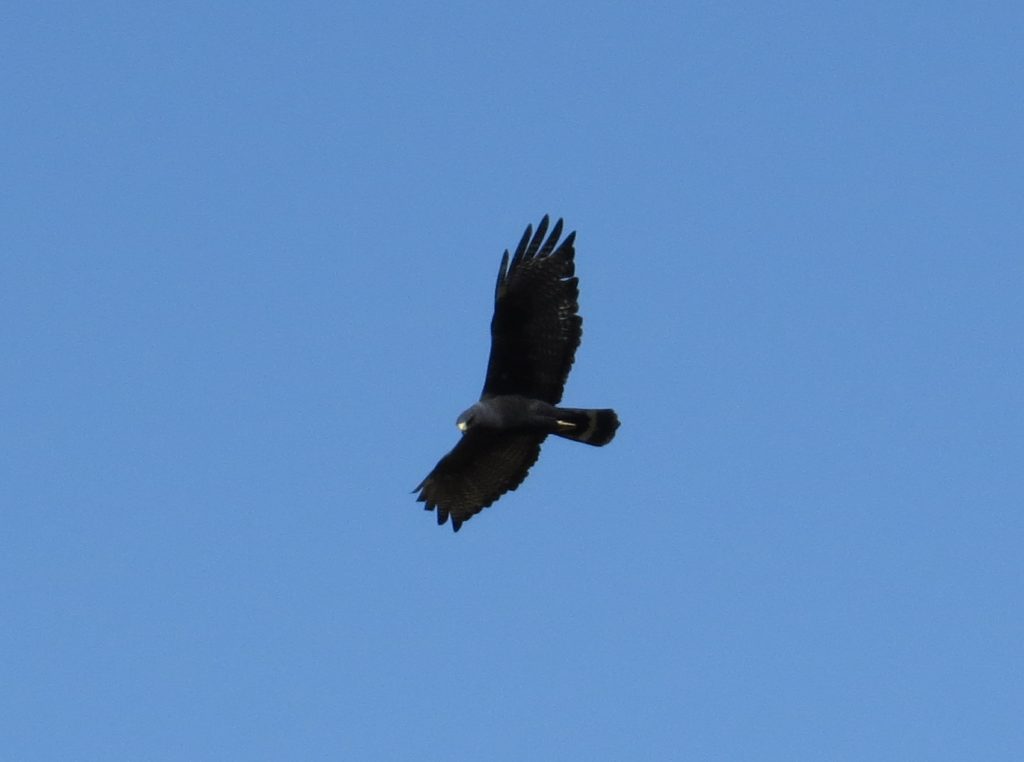 With one Mexican Warbler under our belts, it was time to go after another that had been showing in the Chiricahuas, the Slate-throated Redstart. I had tried for this ABA Code-3 a few years ago in Hunter Canyon. We barely had enough daylight to get all the way up and over the Chiris to Pinery Canyon where it had been seen. The views along the way were spectacular even if the road was a bit stressful with its curves and steep drop-offs. I’m glad Steve was driving.
With one Mexican Warbler under our belts, it was time to go after another that had been showing in the Chiricahuas, the Slate-throated Redstart. I had tried for this ABA Code-3 a few years ago in Hunter Canyon. We barely had enough daylight to get all the way up and over the Chiris to Pinery Canyon where it had been seen. The views along the way were spectacular even if the road was a bit stressful with its curves and steep drop-offs. I’m glad Steve was driving.
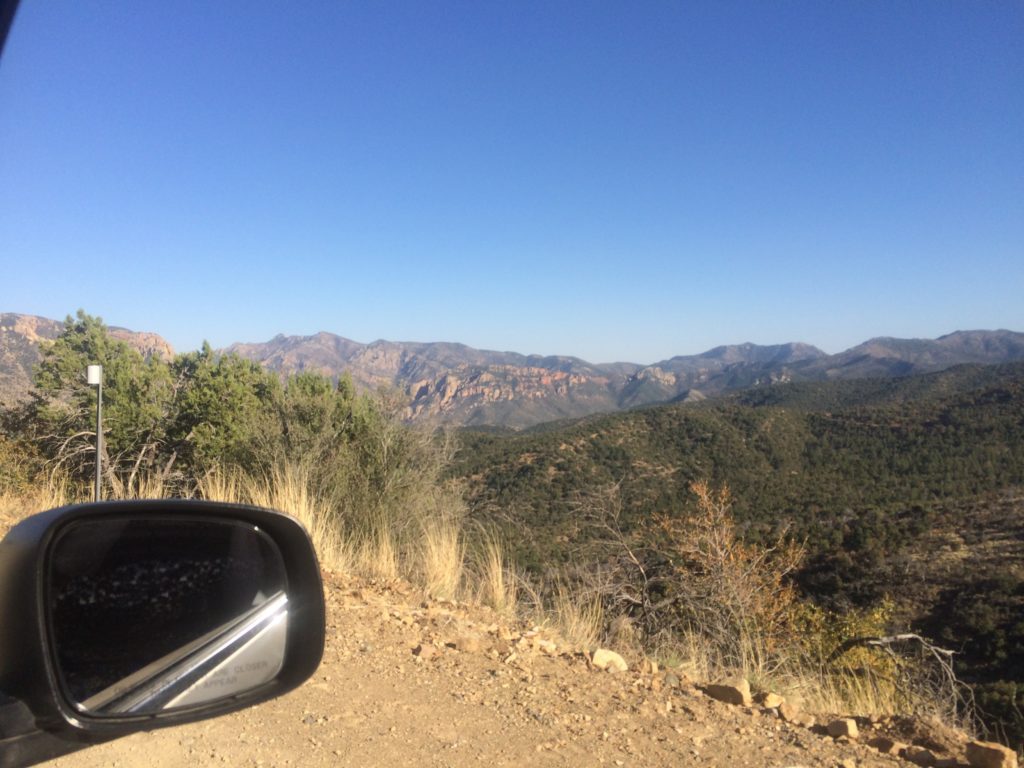
Eventually we got to Pinery Canyon with less than an hour to look before dark. We could not come up with it, though. It was time to find shelter for the night. We decided to stay in nearby Wilcox and try again for the Redstart in the morning. The FEPO trip had turned into a trip of collecting ABA rarities. We were in too deep now to not try to get this Warbler too.
That next morning as we left the hotel, we saw some Ravens in the parking lot and rolled down the windows to listen. The call confirmed that they were our lifer Chihuahuan Ravens, a nice bonus bird. We finally made the climb back up to Pinery Canyon and were joined by a few other birders along with a fresh helping of optimism.
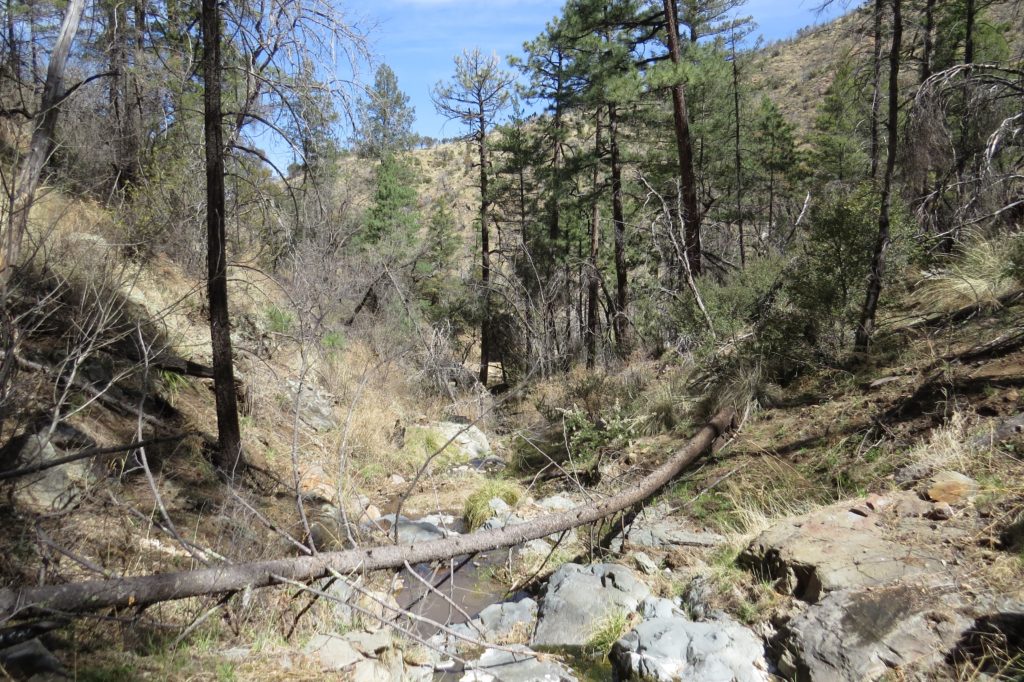
We hiked up the canyon and looked and listened. A cooperative Yellow-eyed Junco occupied my attention while I waited for the main attraction.
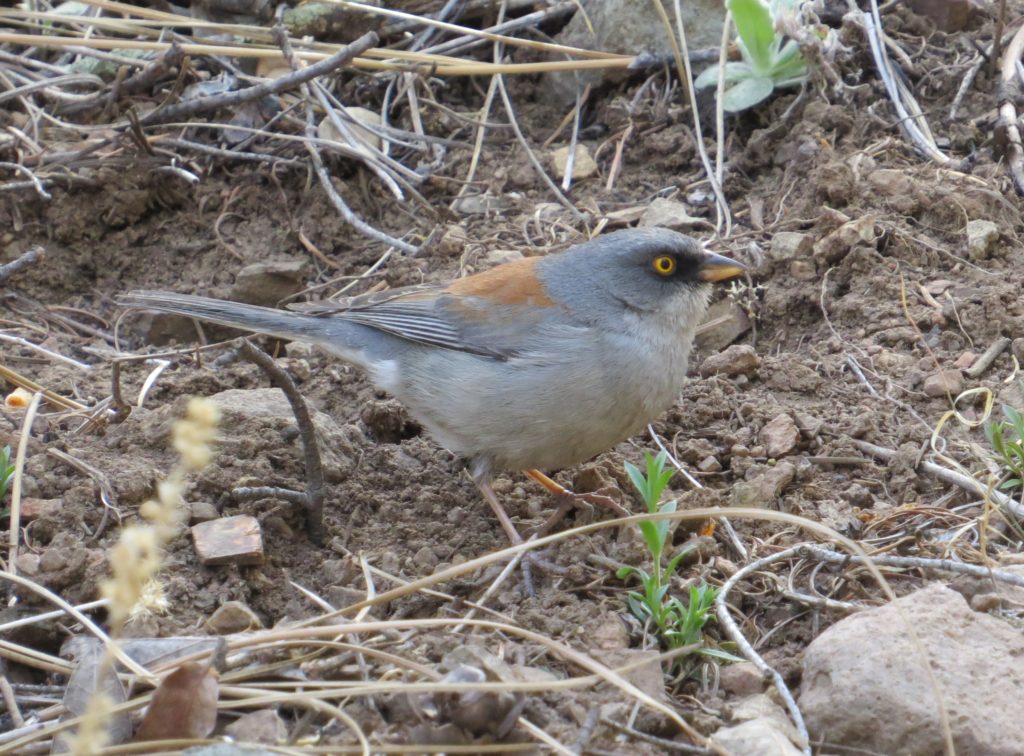
After about a half hour or so of searching, Tommy was further up the canyon when he shouted, “Josh!” Tommy had found the Slate-throated Redstart, and Steve and I scrambled up the canyon to get to where Tommy was. The bird was staying to the treetops but did give us a couple quick looks.
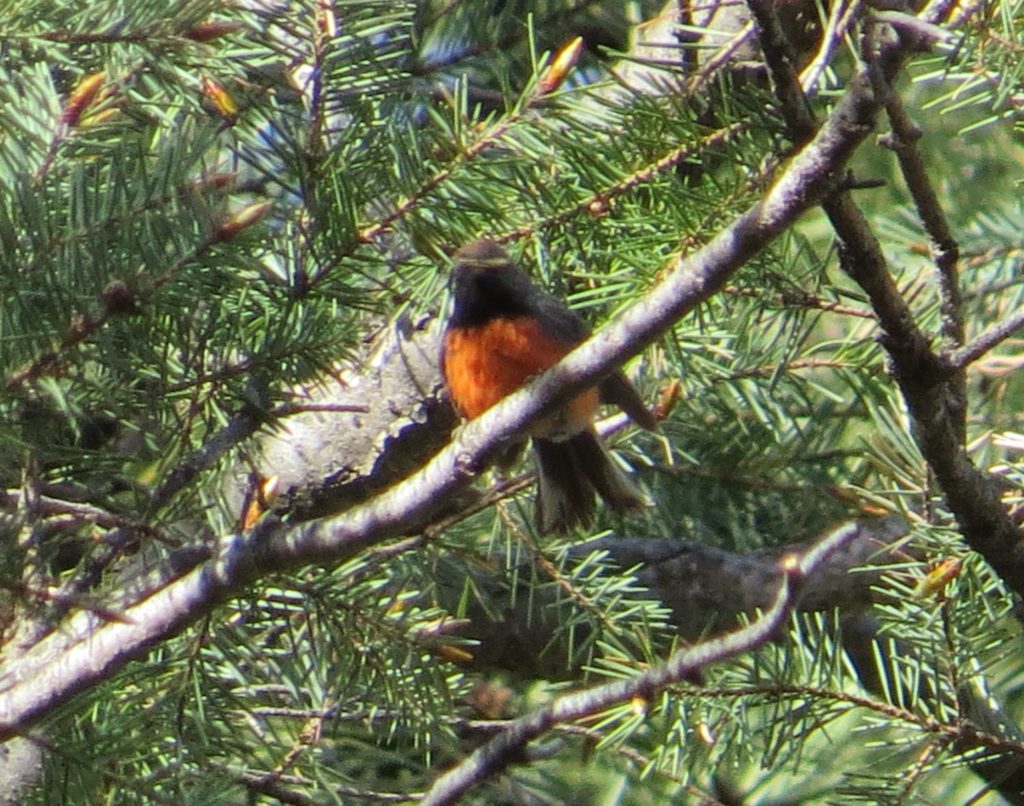
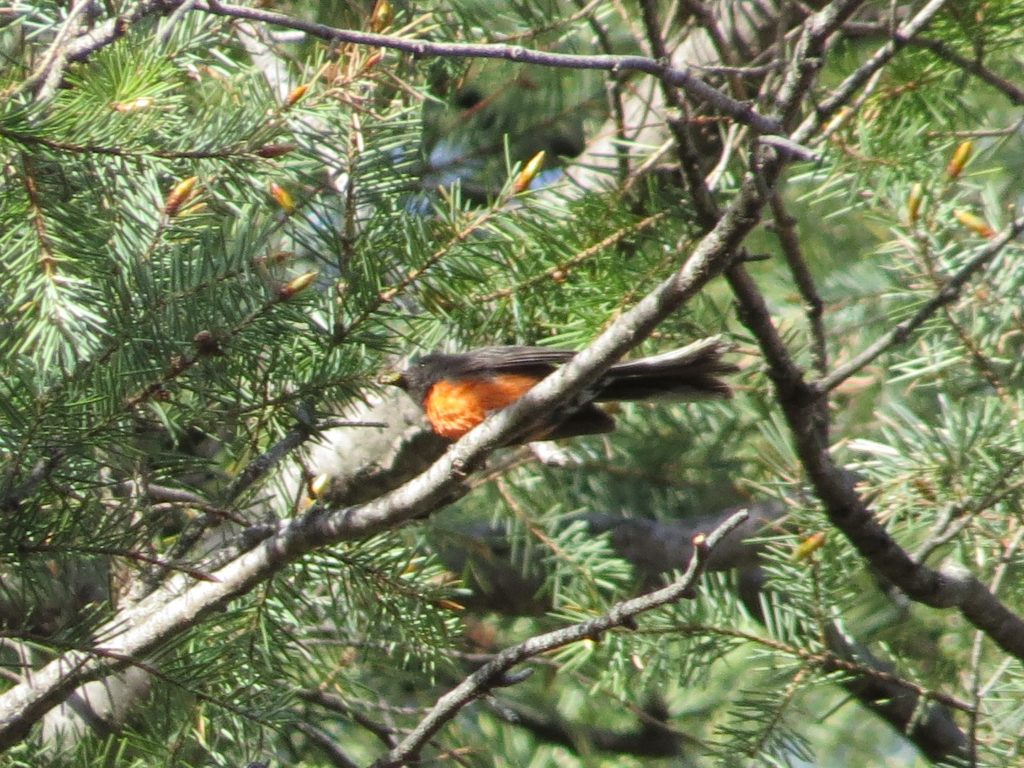
So what does one do to celebrate two Mexican Warblers when you are in the Chiricahuas and you still have a healthy cushion of time before your flight? Obviously, you go get the Mexican Chickadees at the highest elevations of this mountain range! This is a bird I never, ever thought I’d get because of how far one has to travel and how high one has to go to get it. This was our moment.
We went to Barfoot Park to try for the Chickadee. This place was incredible. The pine cathedral and its solitude were peaceful and inspiring. Plus, there were bearded Chickadees somewhere in our midst. After about ten minutes or so, we stumbled onto a quartet of them. Unfortunately, the looks weren’t the best and they weren’t too cooperative for photos. But I shouldn’t complain about such triviality when we had all the experiences we did.
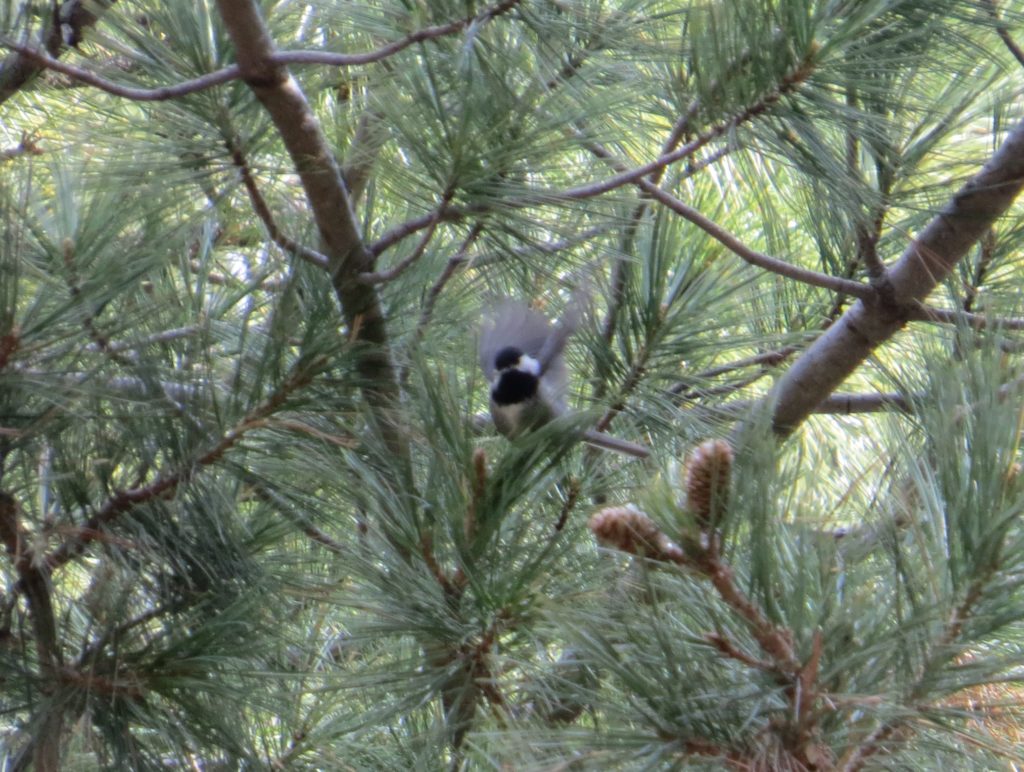 When you are literally on top of the world and have seen the Mexican Chickadee (and all kinds of other crazy good birds), a celebratory selfie is in order.
When you are literally on top of the world and have seen the Mexican Chickadee (and all kinds of other crazy good birds), a celebratory selfie is in order.
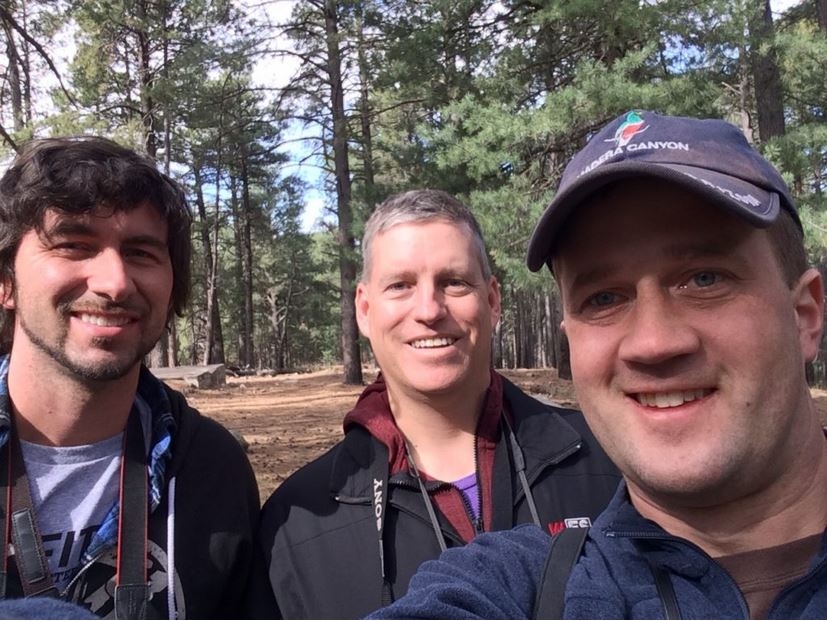
When we finally left the Chiricahuas, we still had some time to spare, so we stopped at Willcox Lake to look for another lifer, the Western Sandpiper. Tommy spied a small group of them, and these birds were extremely cooperative. I was excited to see these birds in breeding plumage.
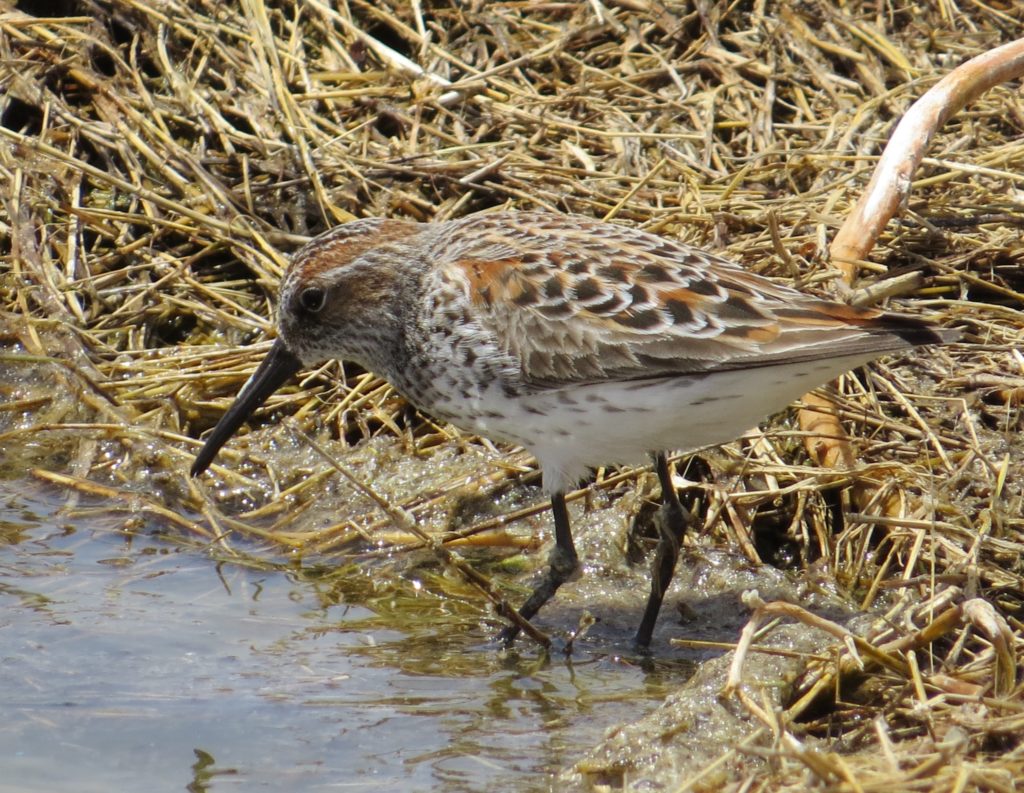 Cinnamon Teal never get old to this birder, and they were quite cooperative in Willcox as well.
Cinnamon Teal never get old to this birder, and they were quite cooperative in Willcox as well.
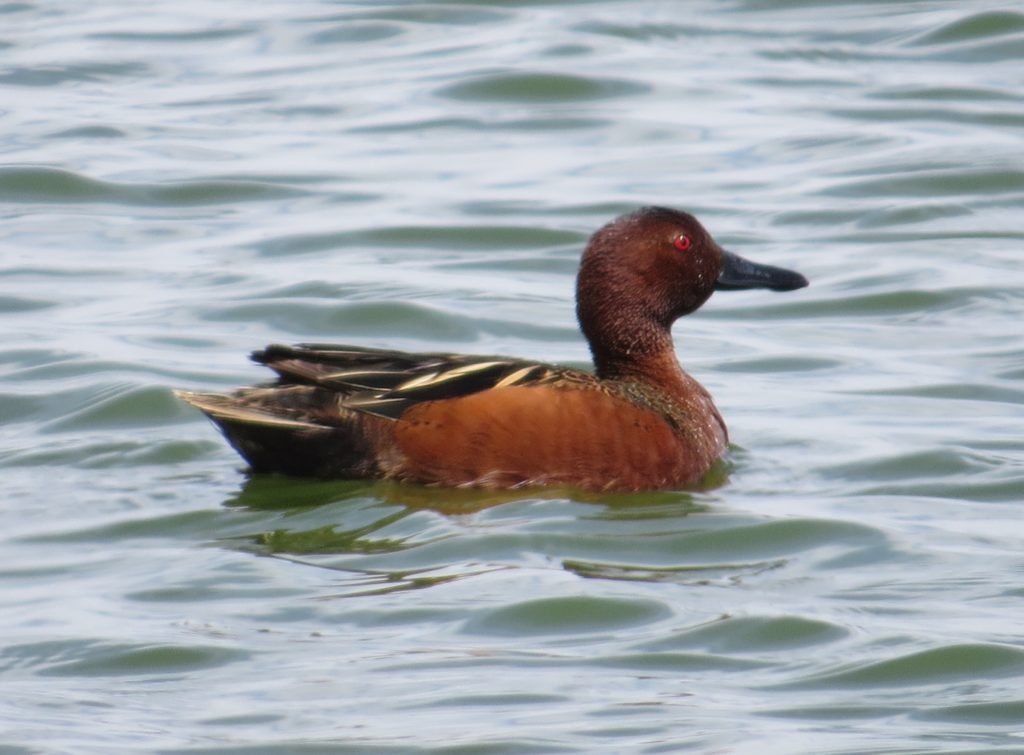 The trip was really over at this point. Steve and I had a flight to catch. That didn’t mean there wasn’t time to make one quick stop when we got close to my parents’ house in Maricopa. Tommy spotted this Burrowing Owl.
The trip was really over at this point. Steve and I had a flight to catch. That didn’t mean there wasn’t time to make one quick stop when we got close to my parents’ house in Maricopa. Tommy spotted this Burrowing Owl.
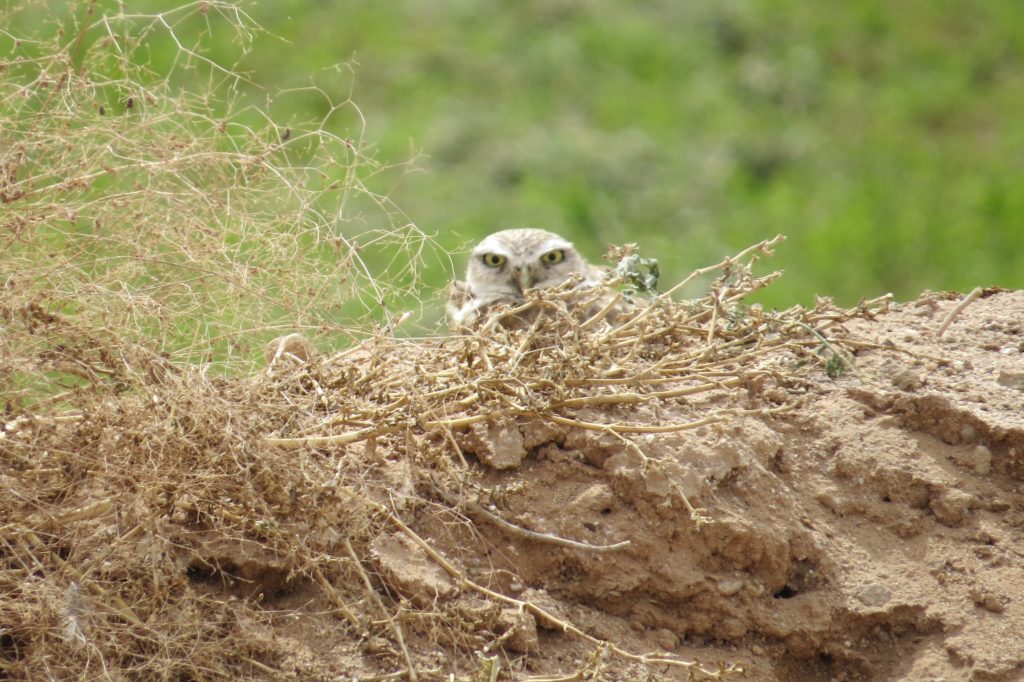
Now Burrowing Owls are not rare around Maricopa, and we have all seen them several times. So why stop? It turns out that in all of our owling together, Tommy and I had seen 15 of the 19 Owl species together, but the Burrowing Owl was not one of them. Now all that’s left for us to complete the 19-Owl collection jointly are Short-eared Owl, Northern Saw-whet Owl, and, of course, the Ferruginous Pygmy-Owl.
While this trip did not go as planned, it was an incredible and memory-filled trip and I have zero complaints I ended up with 18 lifers, Steve had 34, and Tommy had 1. Not only that, but we ended up with three species that were ABA Code-3 and above. I’m glad Steve joined me on this quest and am thankful for Tommy’s assistance in helping us find so many of these birds. Great birds with great friends are what make trips special. And now that I’ve finally finished this trip account nearly one year later, I’m very excited to tell you about another trip with friends. 😉

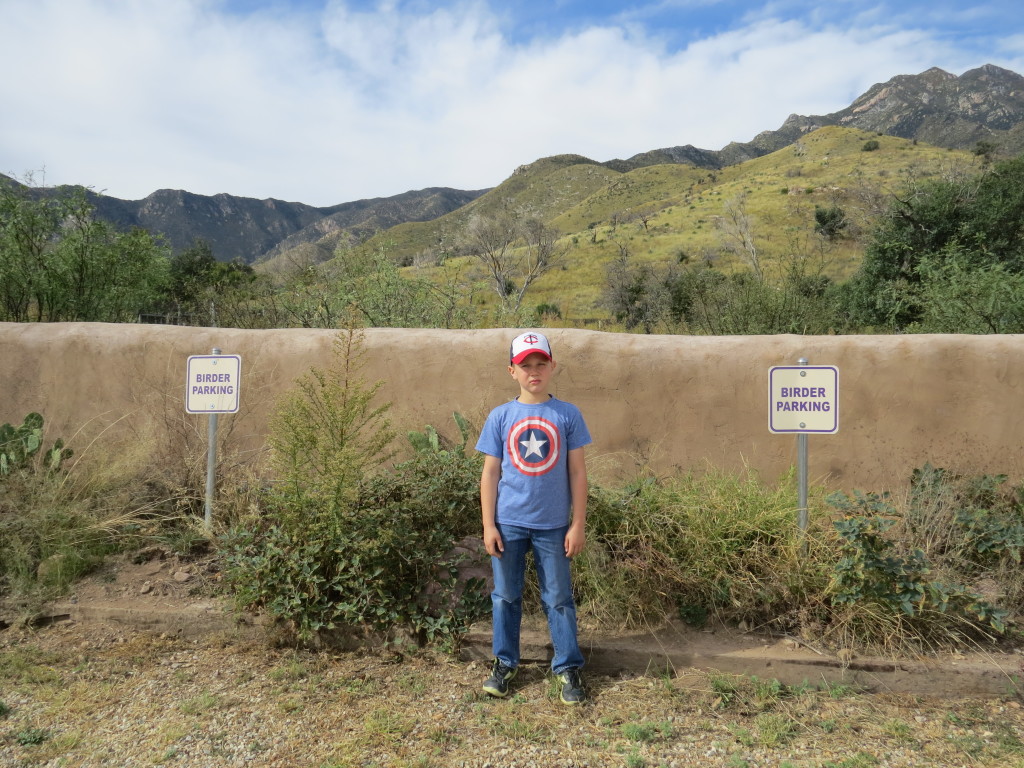
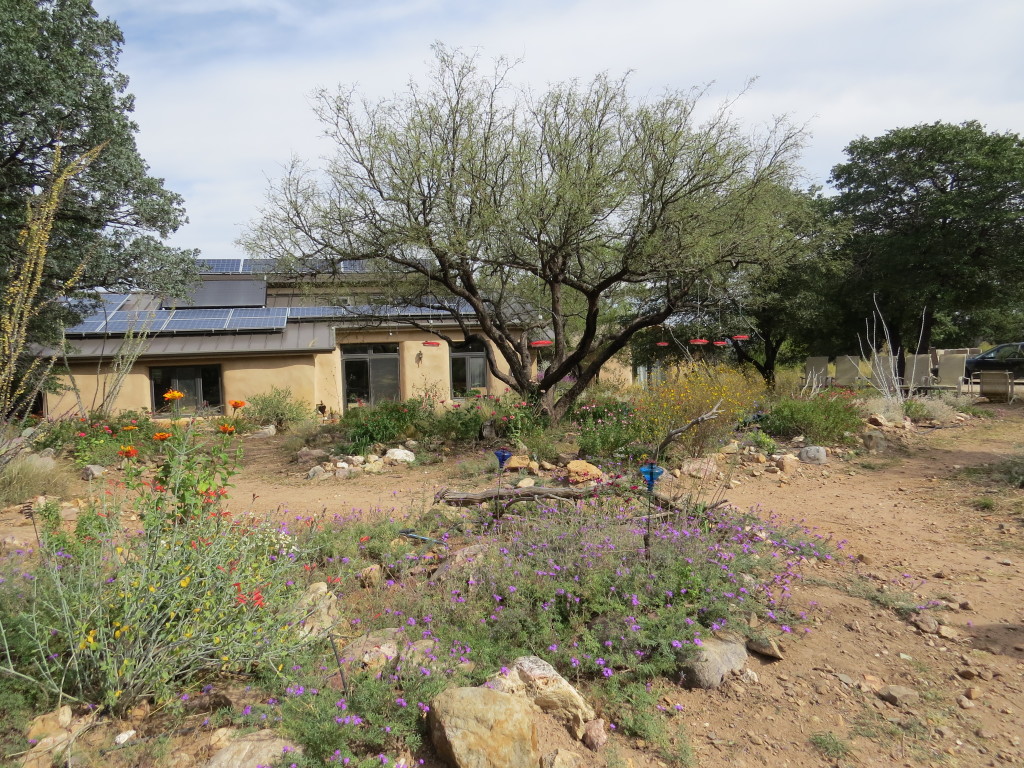 We got some great views of some fun birds while we rested from our recent hike in Hunter Canyon. It was nice to finally see a much nicer Canyon Towee than the haggard one I saw in Florida Canyon last spring. This bird was a lifer for Evan.
We got some great views of some fun birds while we rested from our recent hike in Hunter Canyon. It was nice to finally see a much nicer Canyon Towee than the haggard one I saw in Florida Canyon last spring. This bird was a lifer for Evan.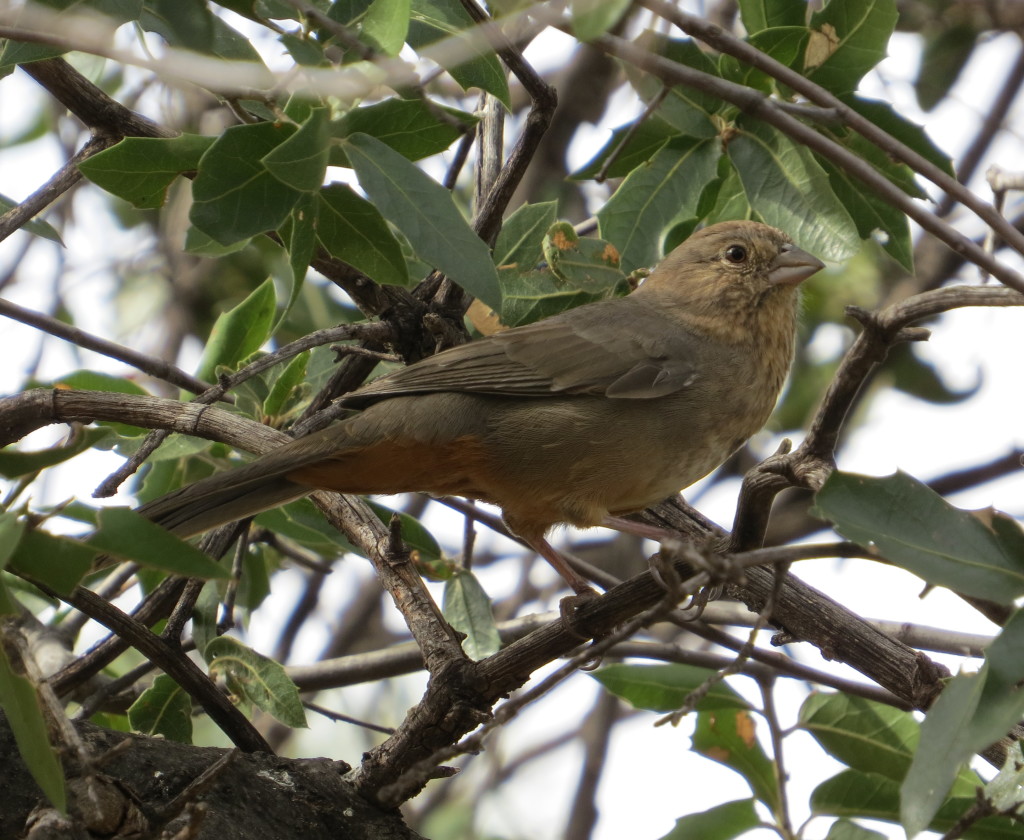 We also got to see another Scott’s Oriole (female), but this one did not show itself well either.
We also got to see another Scott’s Oriole (female), but this one did not show itself well either.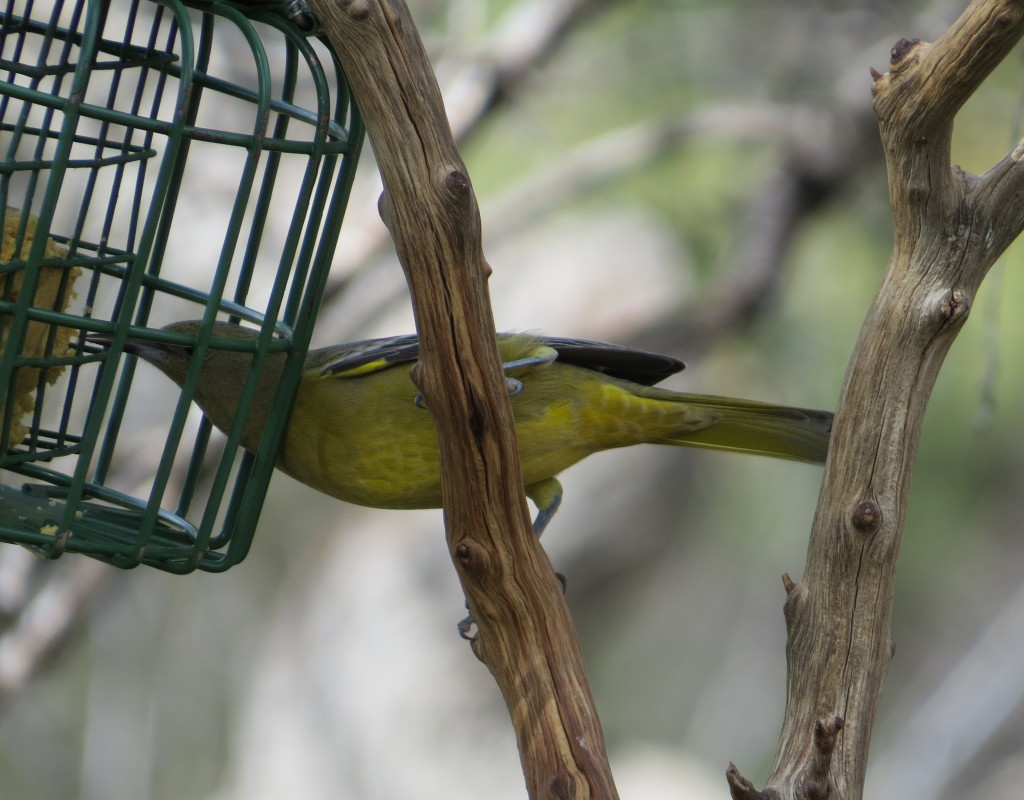 Seeing a lifer Dark-eyed Junco sub-species, like this Gray-headed variety, is always fun.
Seeing a lifer Dark-eyed Junco sub-species, like this Gray-headed variety, is always fun.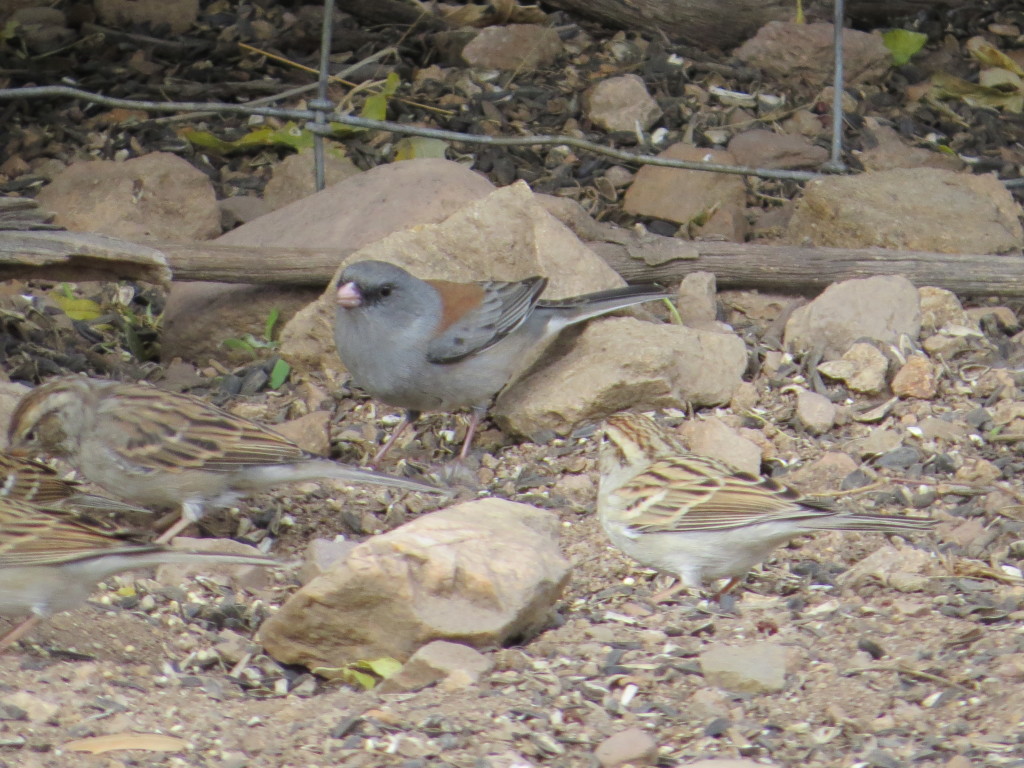 Acorn Woodpeckers were a common sight at all our stops in the Huachucas. At least at Mary Jo’s feeders, you can get a good photo while sitting down–a great combo.
Acorn Woodpeckers were a common sight at all our stops in the Huachucas. At least at Mary Jo’s feeders, you can get a good photo while sitting down–a great combo.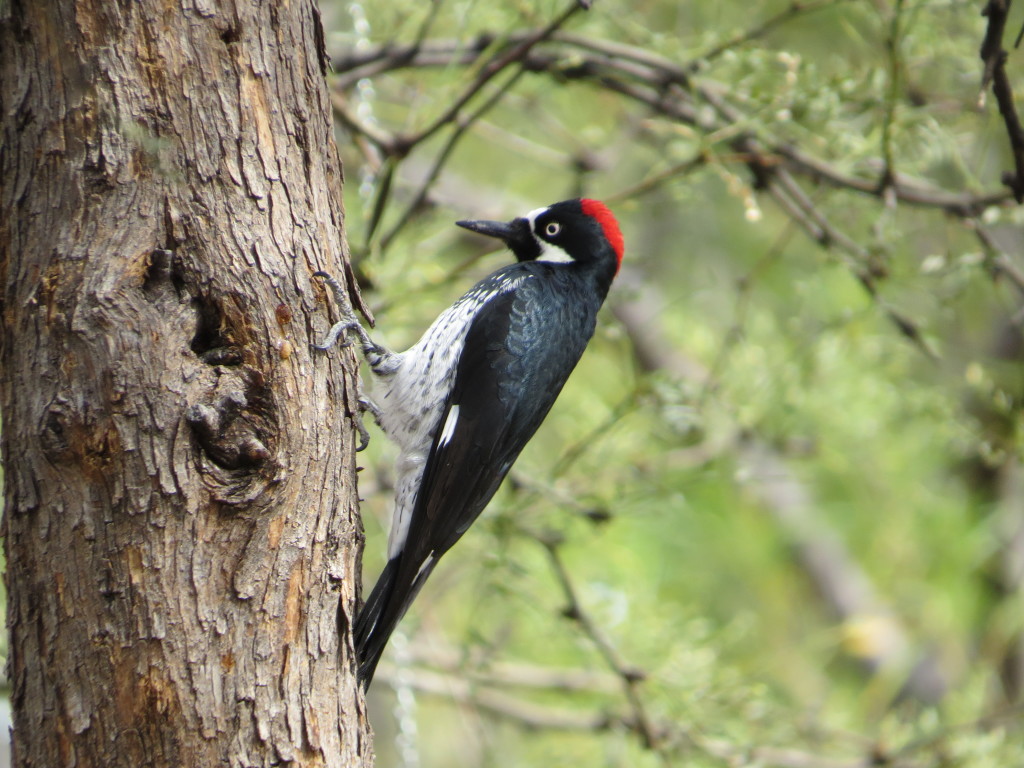
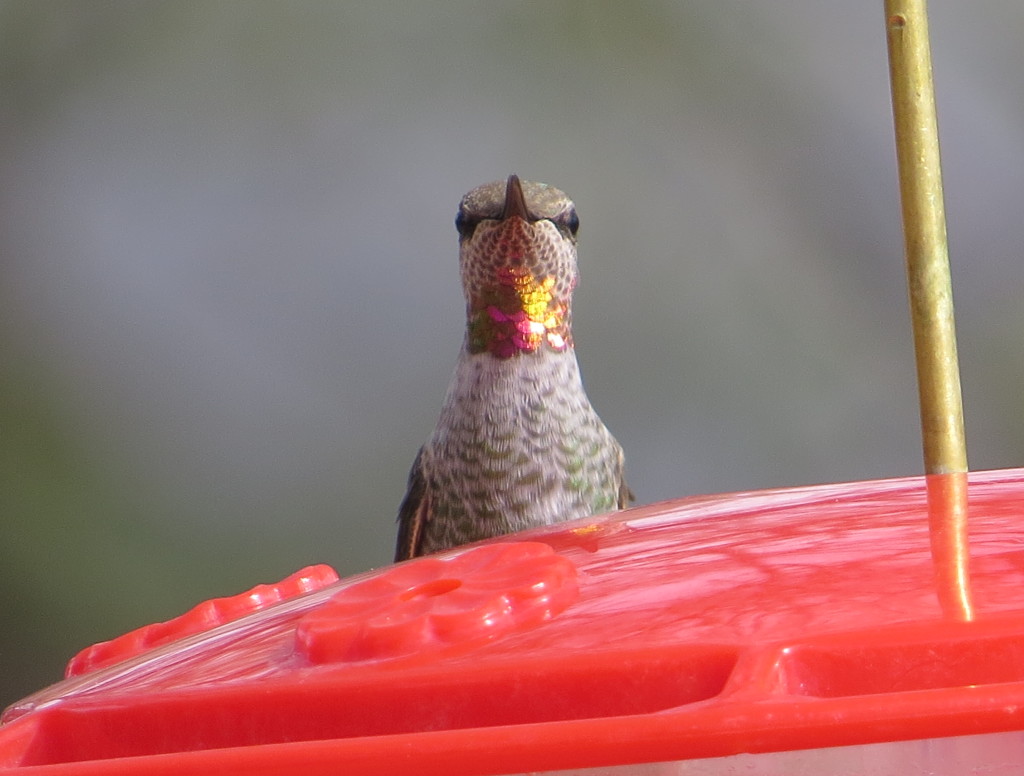 Evan also got his Magnificent Hummingbird lifer with the help of owner Mary Jo who seems to constantly monitor the bird activity in her yard. Tommy and Gordon were watching a different set of Hummingbird feeders and had seen one of the reported Lucifer Hummingbirds. So Evan and I joined them and watched those feeders for a short time to see if we could get this rare Hummer too. That said, Miller Canyon was beckoning, both for what it held and for the short amount of time we had left to bird. Thankfully the Lucifer was understanding and showed up in short order. Note the thick, decurved bill.
Evan also got his Magnificent Hummingbird lifer with the help of owner Mary Jo who seems to constantly monitor the bird activity in her yard. Tommy and Gordon were watching a different set of Hummingbird feeders and had seen one of the reported Lucifer Hummingbirds. So Evan and I joined them and watched those feeders for a short time to see if we could get this rare Hummer too. That said, Miller Canyon was beckoning, both for what it held and for the short amount of time we had left to bird. Thankfully the Lucifer was understanding and showed up in short order. Note the thick, decurved bill.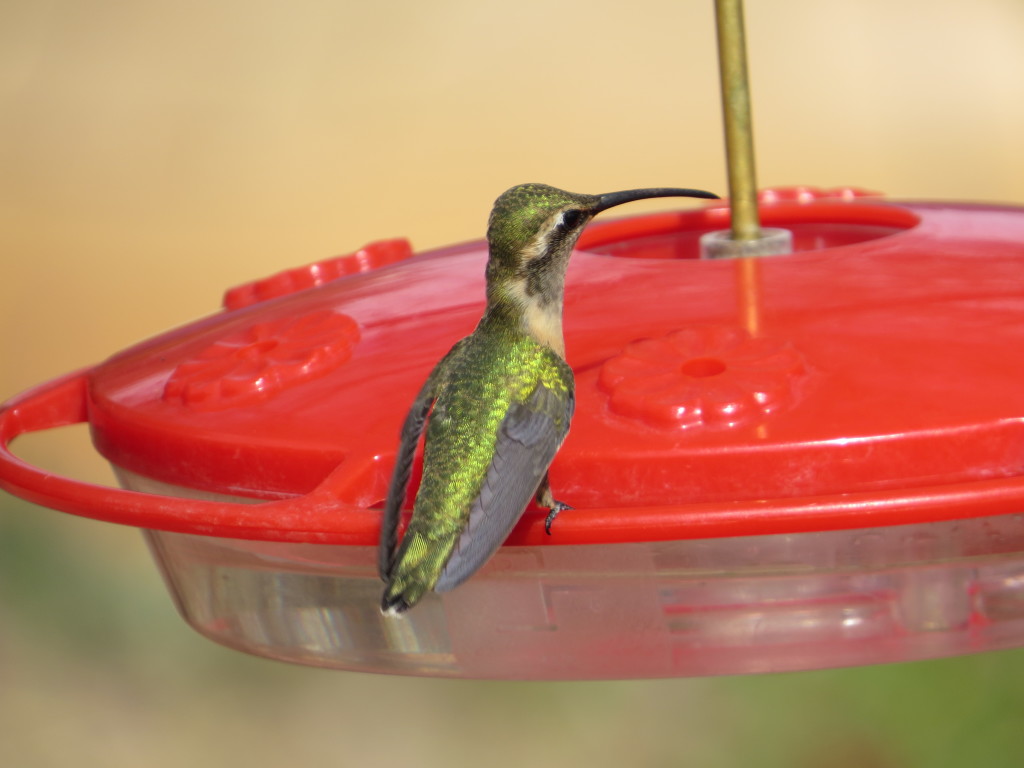
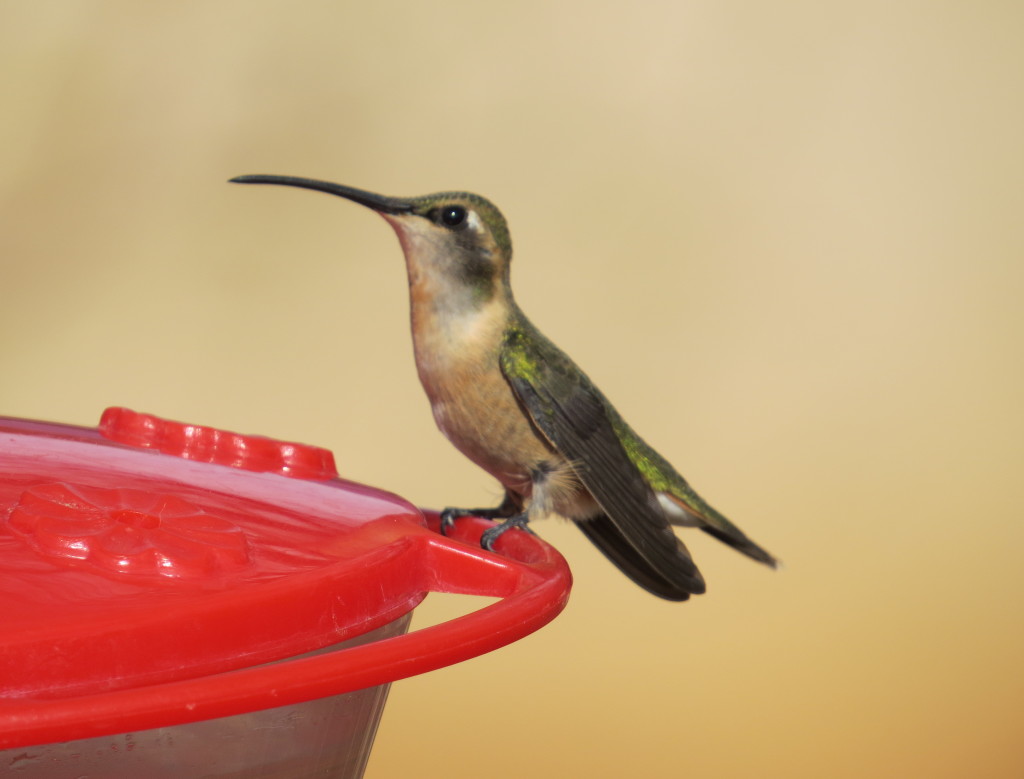 The rarity of this bird was really cool even if the plain looks of this juvenile bird were not impressive. I regretfully later found out that an adult male Lucifer had been visiting these feeders on the very day we were there. Doh!
The rarity of this bird was really cool even if the plain looks of this juvenile bird were not impressive. I regretfully later found out that an adult male Lucifer had been visiting these feeders on the very day we were there. Doh!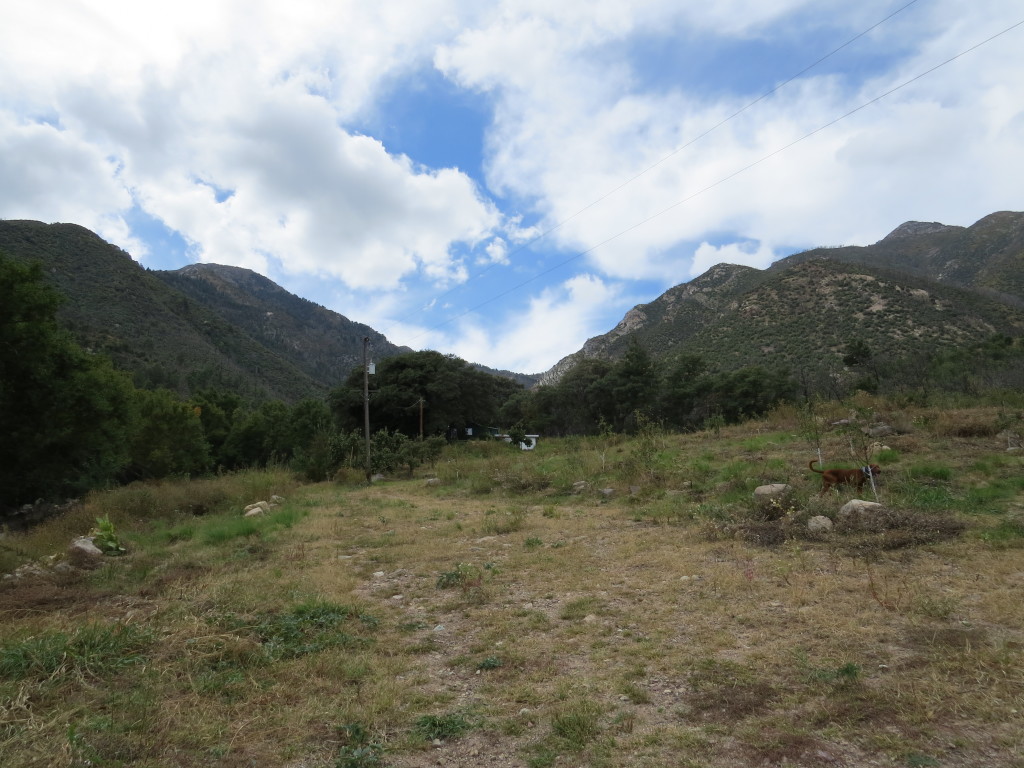
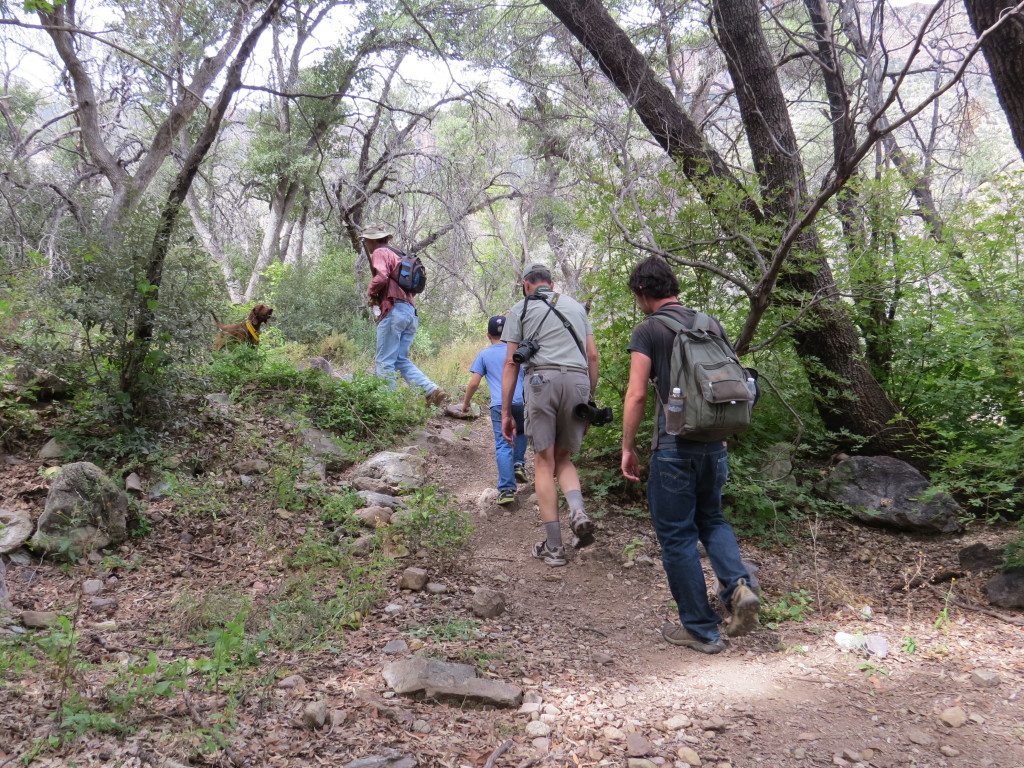
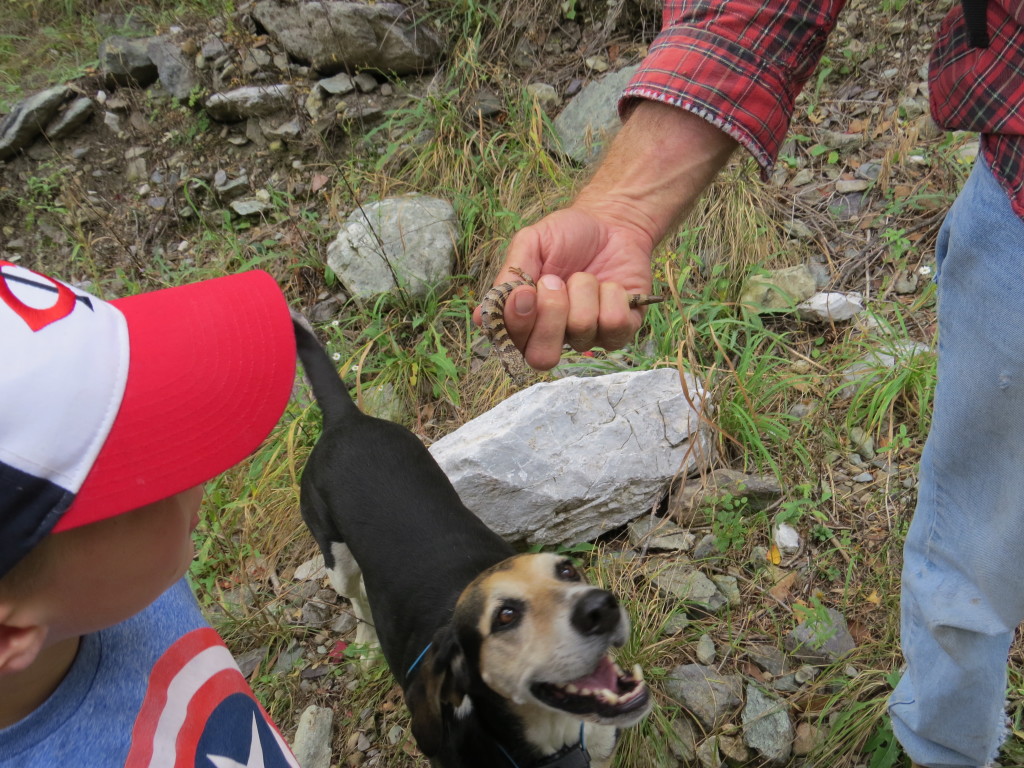 After hiking nearly a mile uphill, we finally reached Split Rock. Here there were two elderly women had been brought to this location earlier to look for the Spotted Owls. Our guide checked out the usual perches for the Owls, a family group of four birds, but none of them held anything. Then, real casually, he points to a different tree and says, “Oh, here’s one.” Sweet!
After hiking nearly a mile uphill, we finally reached Split Rock. Here there were two elderly women had been brought to this location earlier to look for the Spotted Owls. Our guide checked out the usual perches for the Owls, a family group of four birds, but none of them held anything. Then, real casually, he points to a different tree and says, “Oh, here’s one.” Sweet!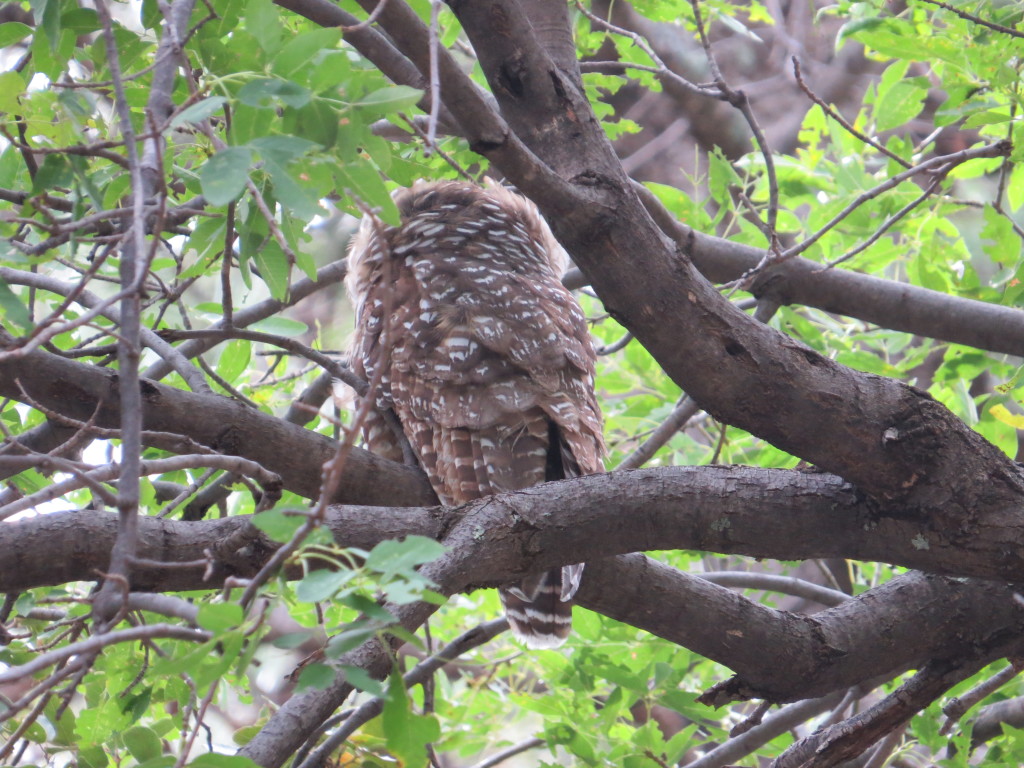
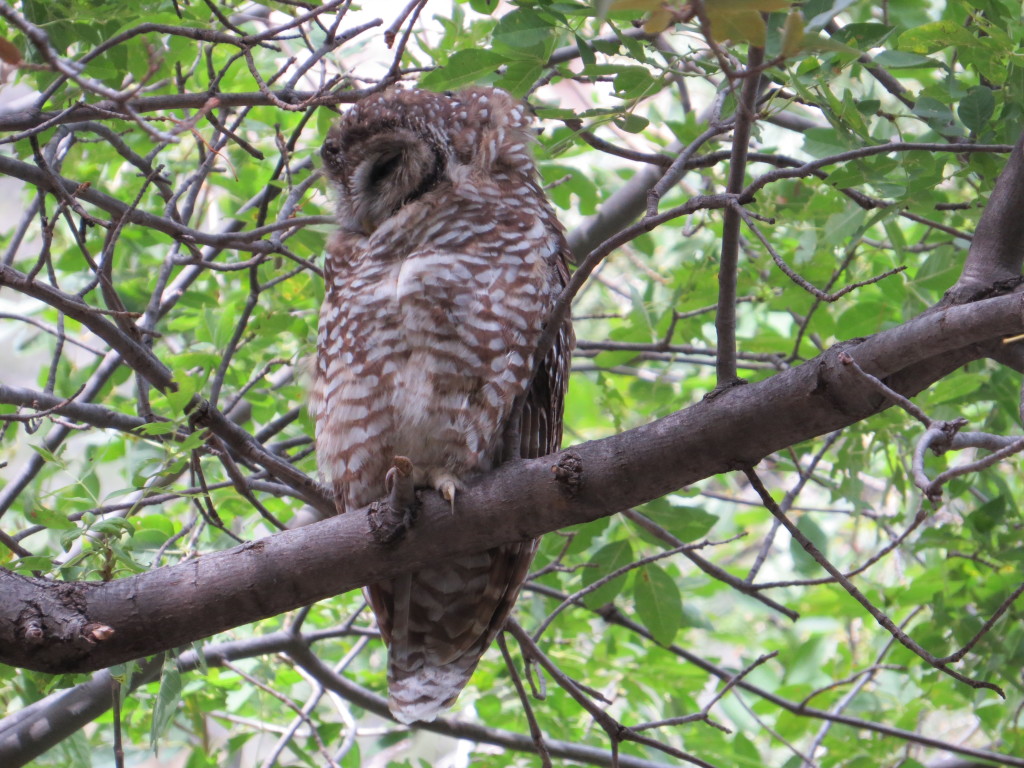 This Owl was a pretty mellow fellow, which I understand is typical for this species. It could not have cared less that we were ooing and awwing over it.
This Owl was a pretty mellow fellow, which I understand is typical for this species. It could not have cared less that we were ooing and awwing over it.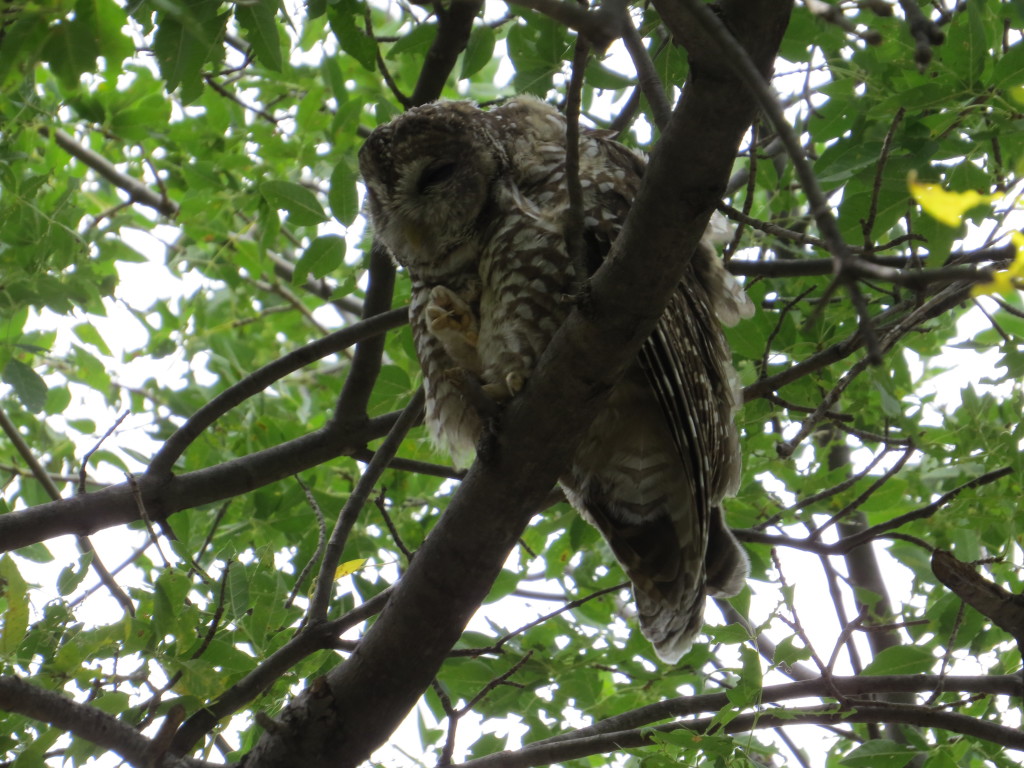
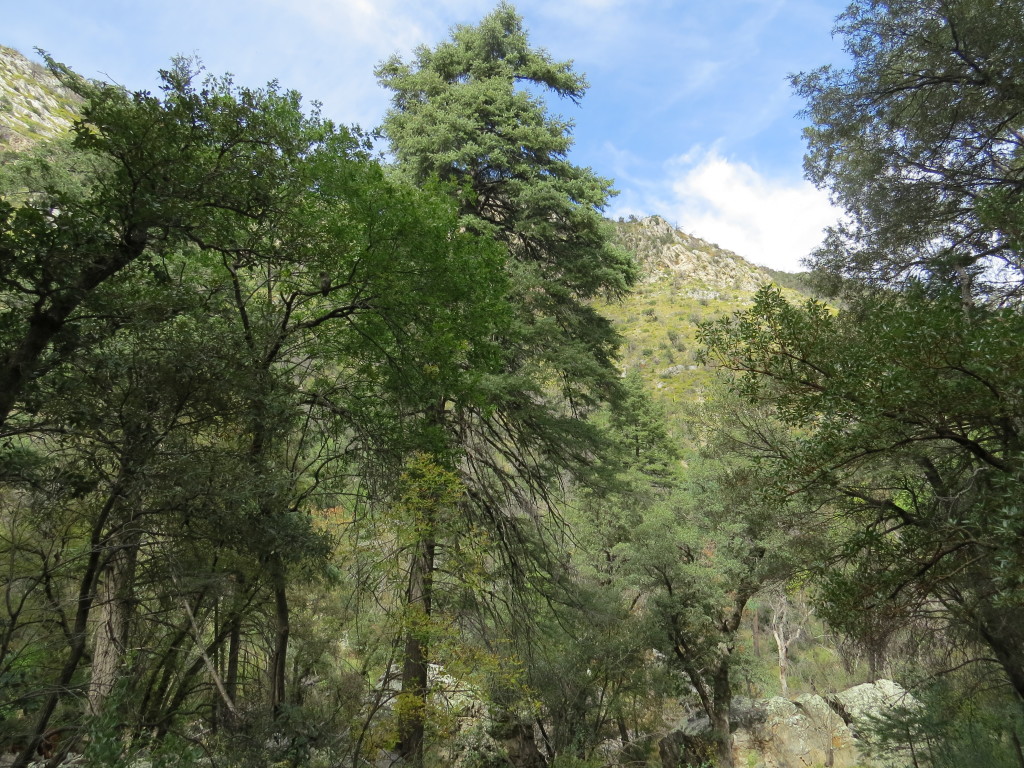 Tommy and I went a little further up the canyon hoping to spot one of the other Spotted Owls on our own which is half the fun of owling. But without any more luck, it was finally time to head back down the canyon. What a thrill it was, though, to get this prized lifer:
Tommy and I went a little further up the canyon hoping to spot one of the other Spotted Owls on our own which is half the fun of owling. But without any more luck, it was finally time to head back down the canyon. What a thrill it was, though, to get this prized lifer: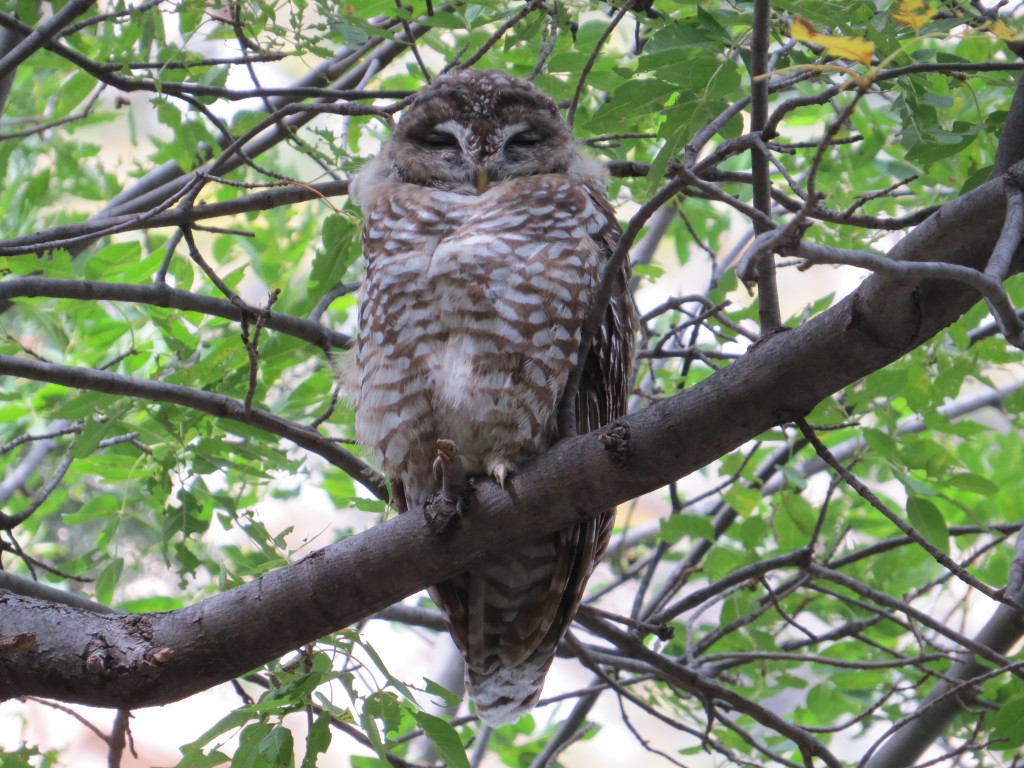
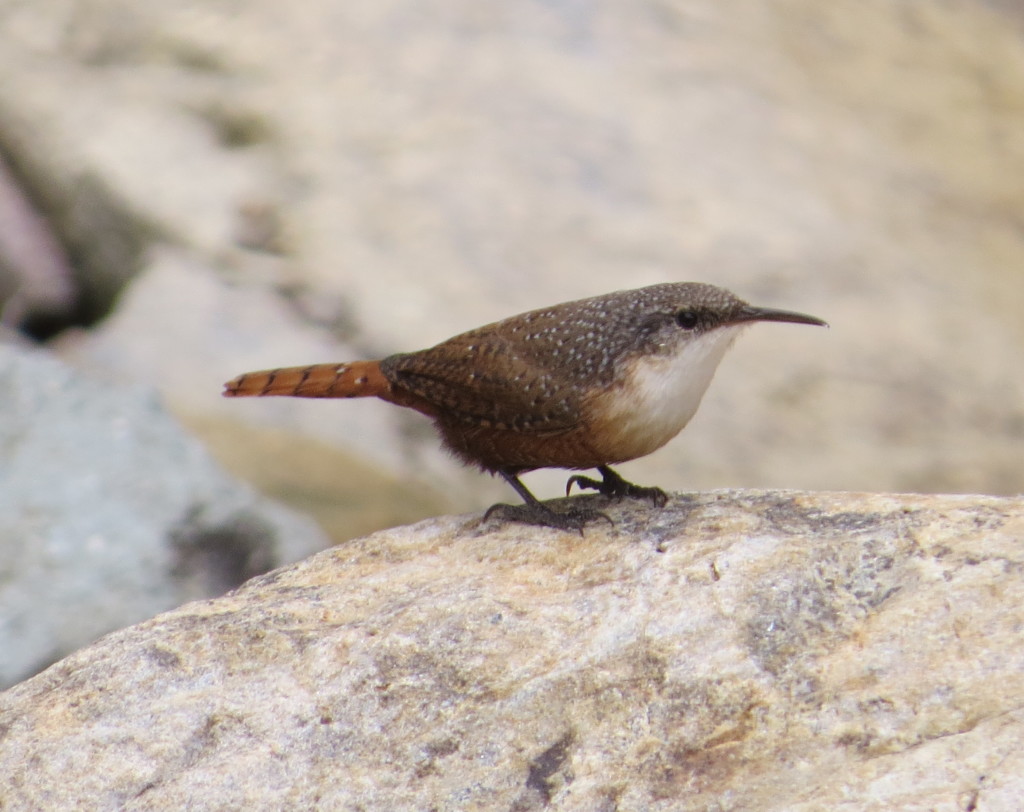
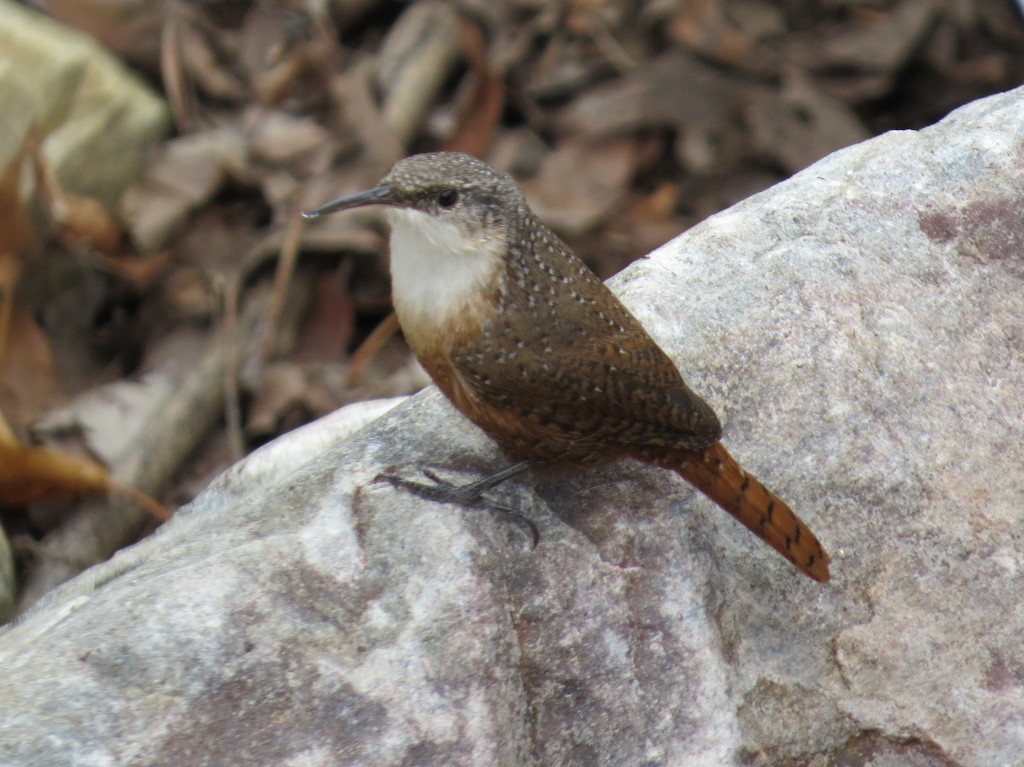 Then there was one last big gift for our big day in the Huachucas. We were nearly to the car when Tommy thought he heard a Black-throated Gray Warbler. I saw one last spring, but only briefly. I was hoping for a better photo. However, I’m just going to have to wait for that because the bird turned out to be a lifer Townsend’s Warbler instead! Now I need a redemptive photo of two western Warblers.
Then there was one last big gift for our big day in the Huachucas. We were nearly to the car when Tommy thought he heard a Black-throated Gray Warbler. I saw one last spring, but only briefly. I was hoping for a better photo. However, I’m just going to have to wait for that because the bird turned out to be a lifer Townsend’s Warbler instead! Now I need a redemptive photo of two western Warblers.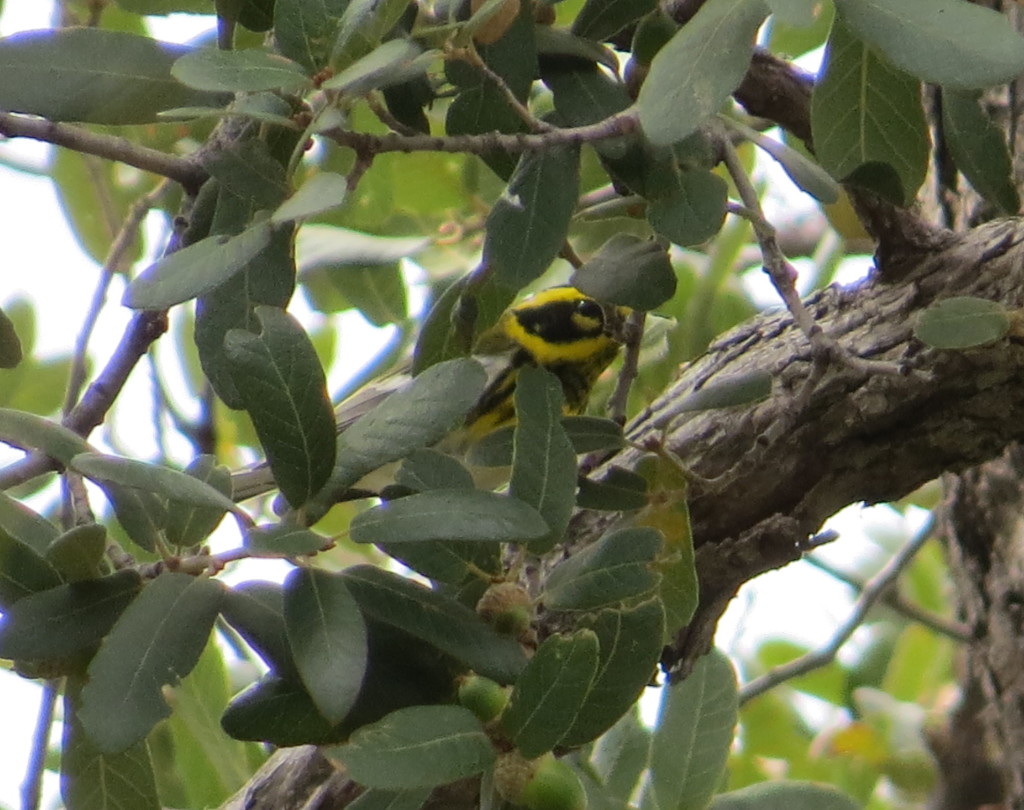 What an incredible day it was at our three stops in the Huachuca Mountains. It was finally time to hit the road to join my family back at Green Valley. Once again, Tommy and Gordon outdid themselves and provided another fun set of SE AZ memories. We said our goodbyes and vowed to meet up again this winter back in Minnesota where it’s not as warm, definitely not as scenic, but with just as cool (if not cooler) Owls. Hopefully Evan and I can repay these guys with some awesome lifers of their own.
What an incredible day it was at our three stops in the Huachuca Mountains. It was finally time to hit the road to join my family back at Green Valley. Once again, Tommy and Gordon outdid themselves and provided another fun set of SE AZ memories. We said our goodbyes and vowed to meet up again this winter back in Minnesota where it’s not as warm, definitely not as scenic, but with just as cool (if not cooler) Owls. Hopefully Evan and I can repay these guys with some awesome lifers of their own.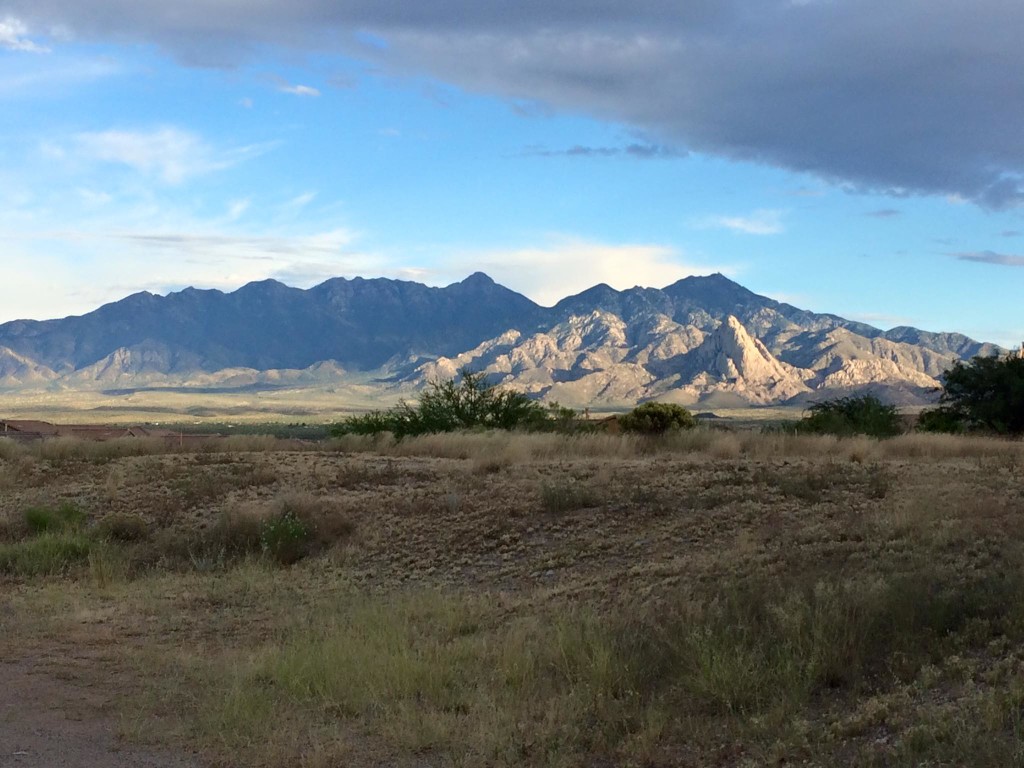
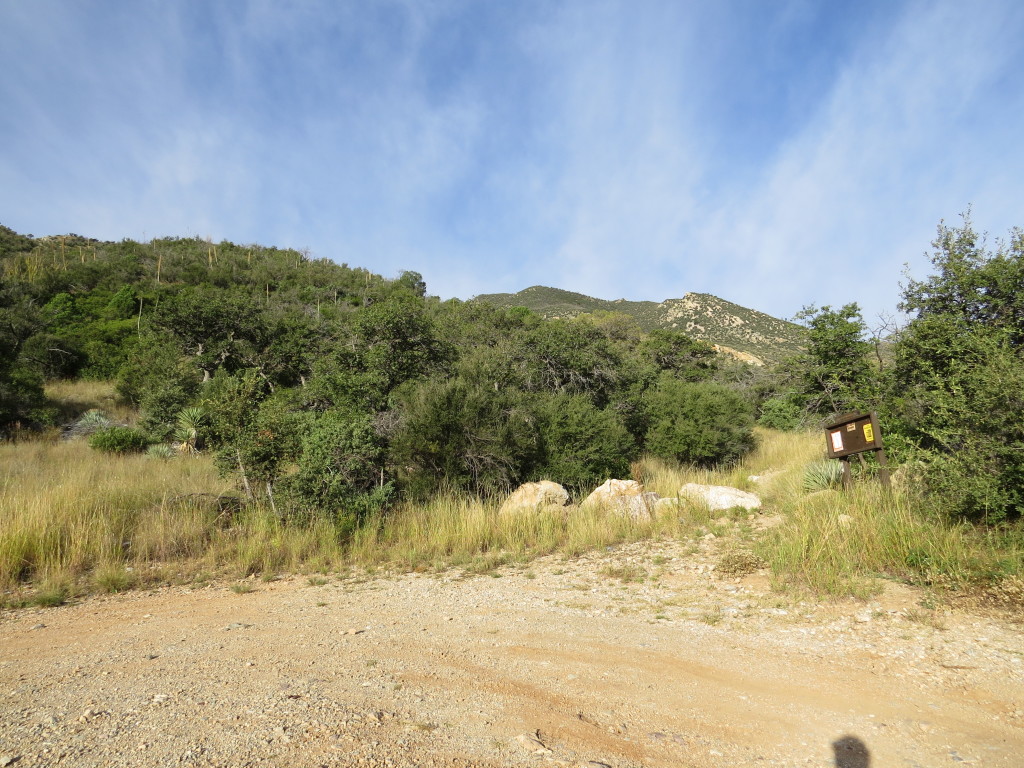
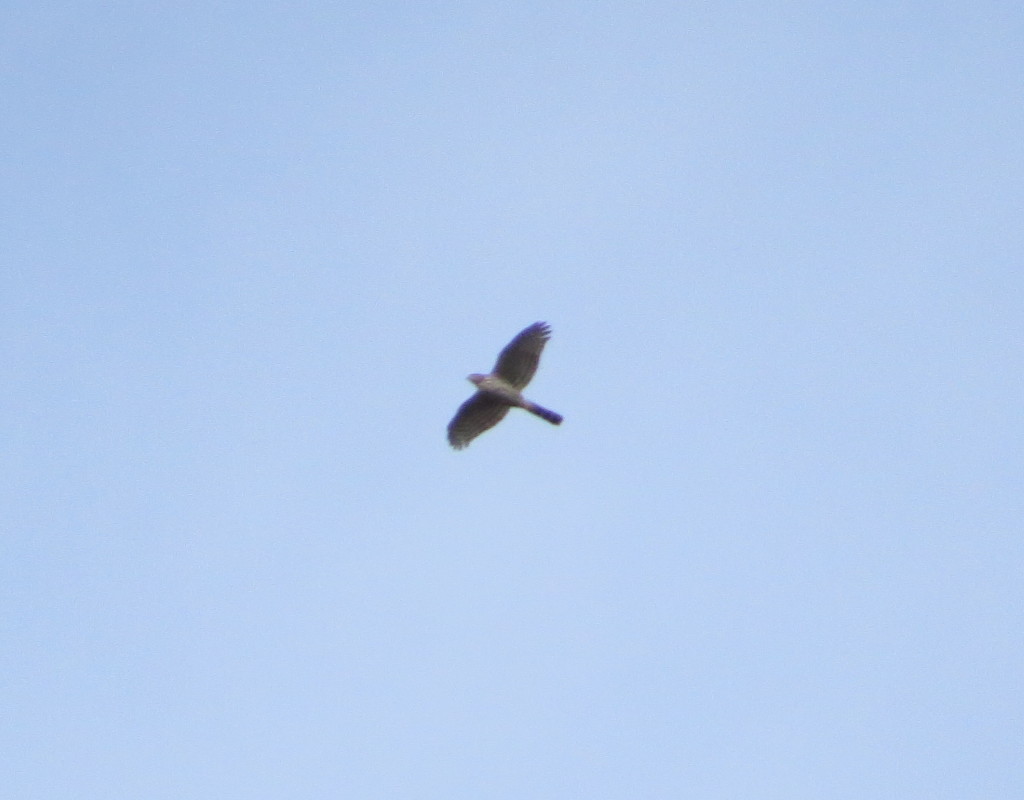
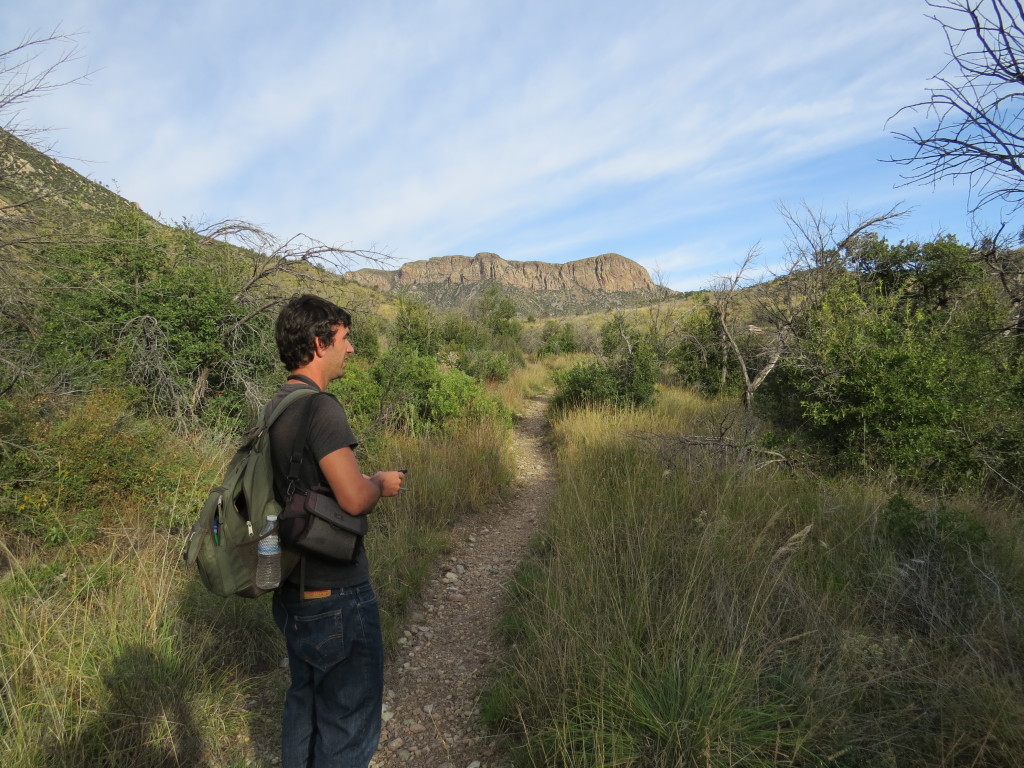 Tommy’s ear for bird sounds is truly impressive–hardly a chip note, flight call, or song gets by him. In fact, he doesn’t even announce all that he’s hearing unless it’s important, like this lifer Bewick’s Wren.
Tommy’s ear for bird sounds is truly impressive–hardly a chip note, flight call, or song gets by him. In fact, he doesn’t even announce all that he’s hearing unless it’s important, like this lifer Bewick’s Wren.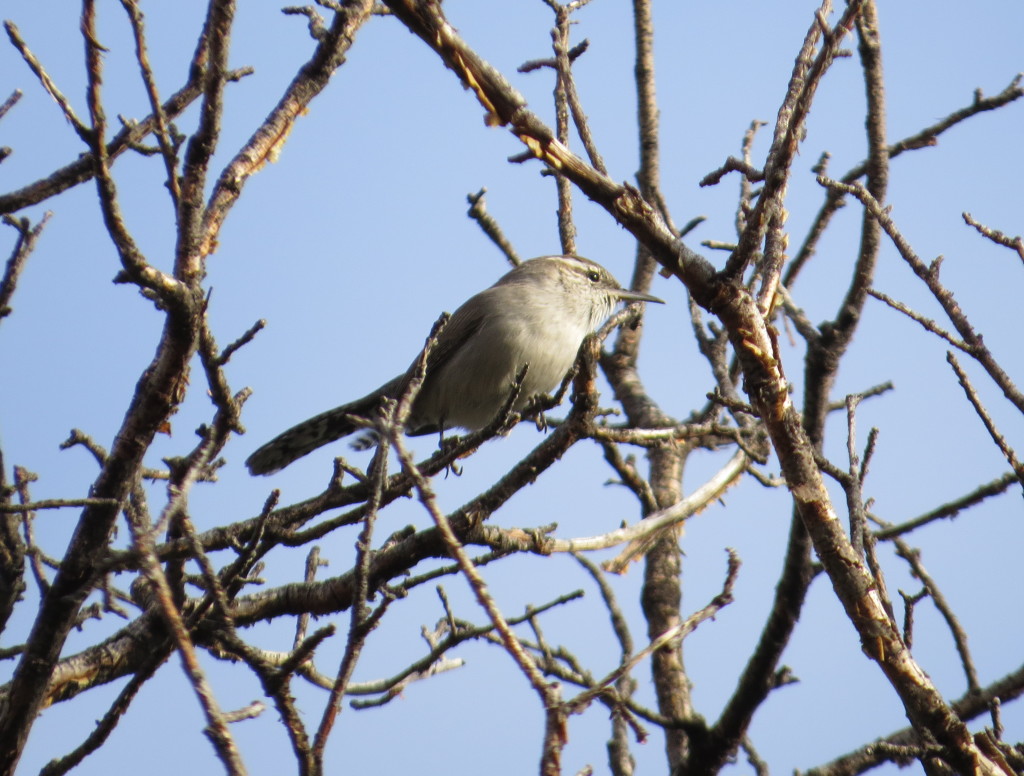
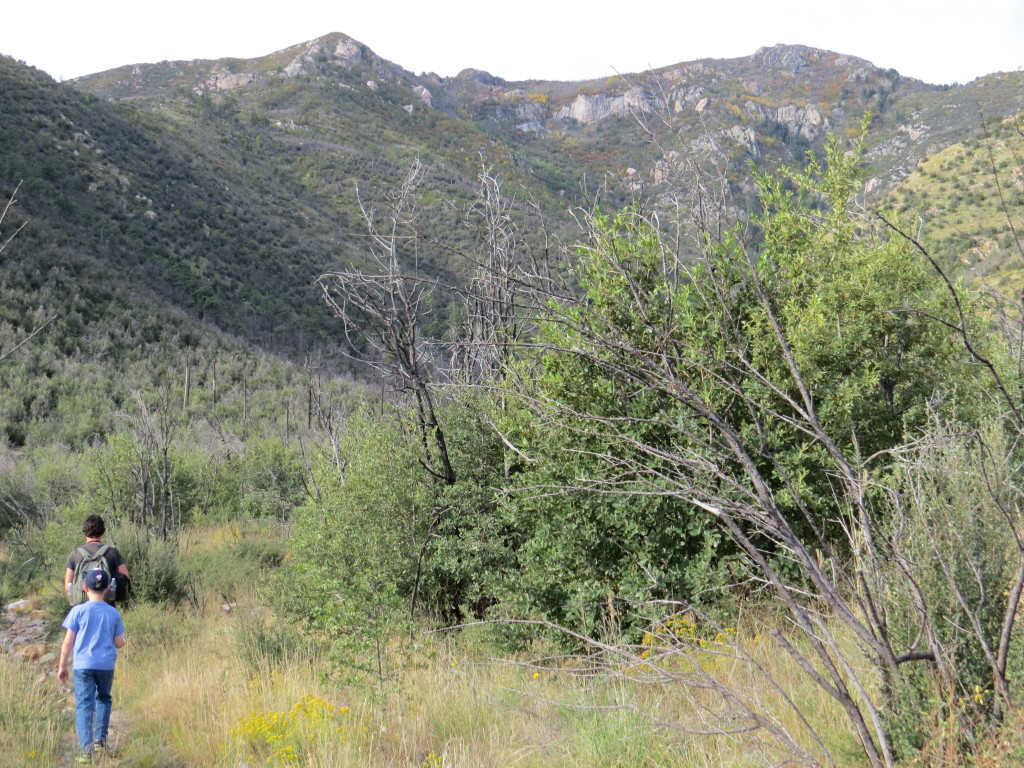 It is where this lowland scrub terminates and the forest of the canyon begins that the Slate-throated Redstart had been seen just a couple days prior. We paused to look and listen, but it seemed well-known at this point that the Redstart was gone. We did, however, start to hear multiple Rufous-capped Warblers all around us! Getting a visual of this brush-loving bird is another story. The sound seemed to come from everywhere and then stopped all of the sudden. Weird. So onward and upward we kept going. At least the view back down the mountain was nice.
It is where this lowland scrub terminates and the forest of the canyon begins that the Slate-throated Redstart had been seen just a couple days prior. We paused to look and listen, but it seemed well-known at this point that the Redstart was gone. We did, however, start to hear multiple Rufous-capped Warblers all around us! Getting a visual of this brush-loving bird is another story. The sound seemed to come from everywhere and then stopped all of the sudden. Weird. So onward and upward we kept going. At least the view back down the mountain was nice.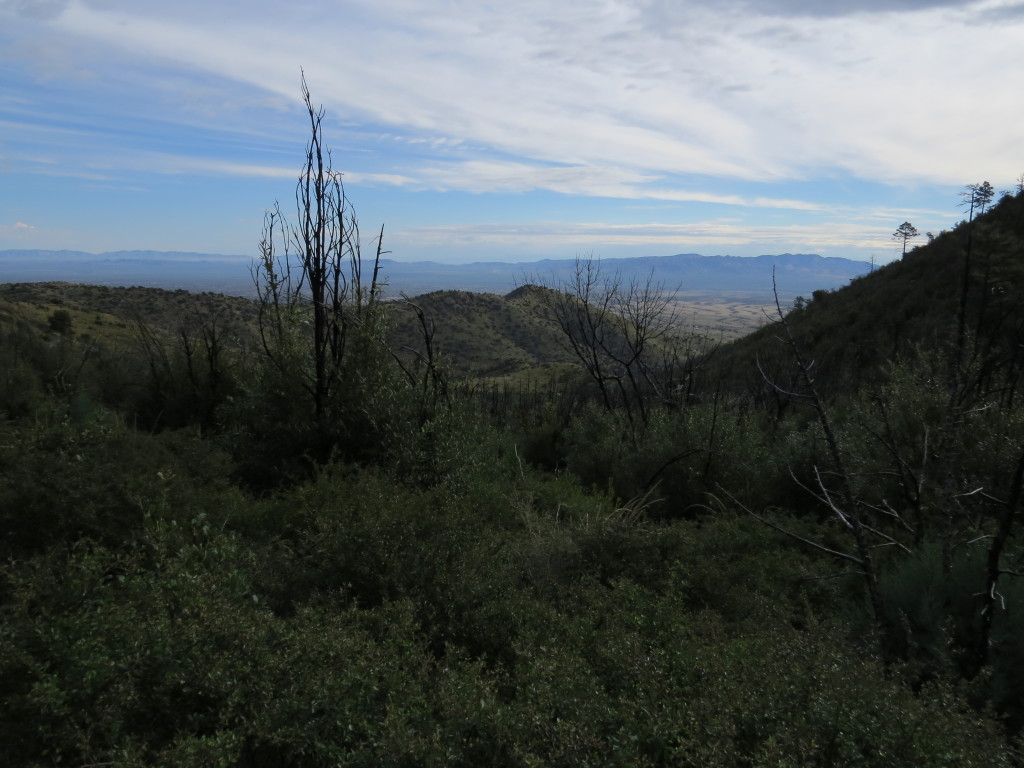
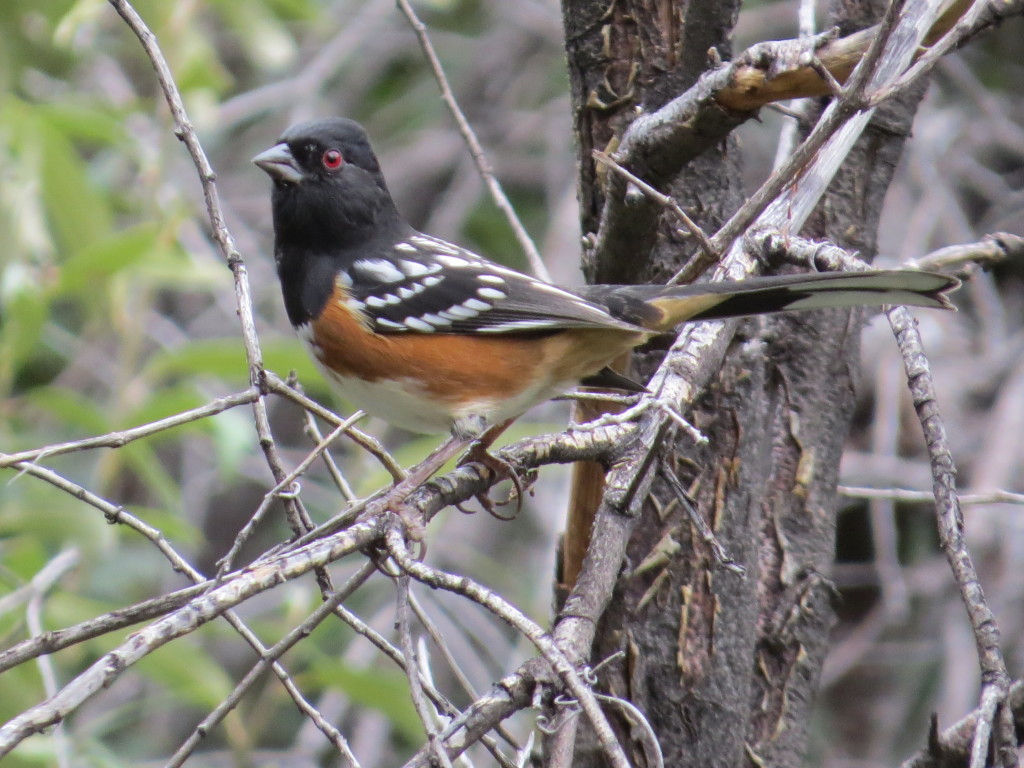 In hindsight, this was the calm before the storm because things took off in a hurry. It all started when Tommy spotted a male Hepatic Tanager which was a lifer for Evan and me. I didn’t see it, but I spotted my own Hepatic lifer (female).
In hindsight, this was the calm before the storm because things took off in a hurry. It all started when Tommy spotted a male Hepatic Tanager which was a lifer for Evan and me. I didn’t see it, but I spotted my own Hepatic lifer (female).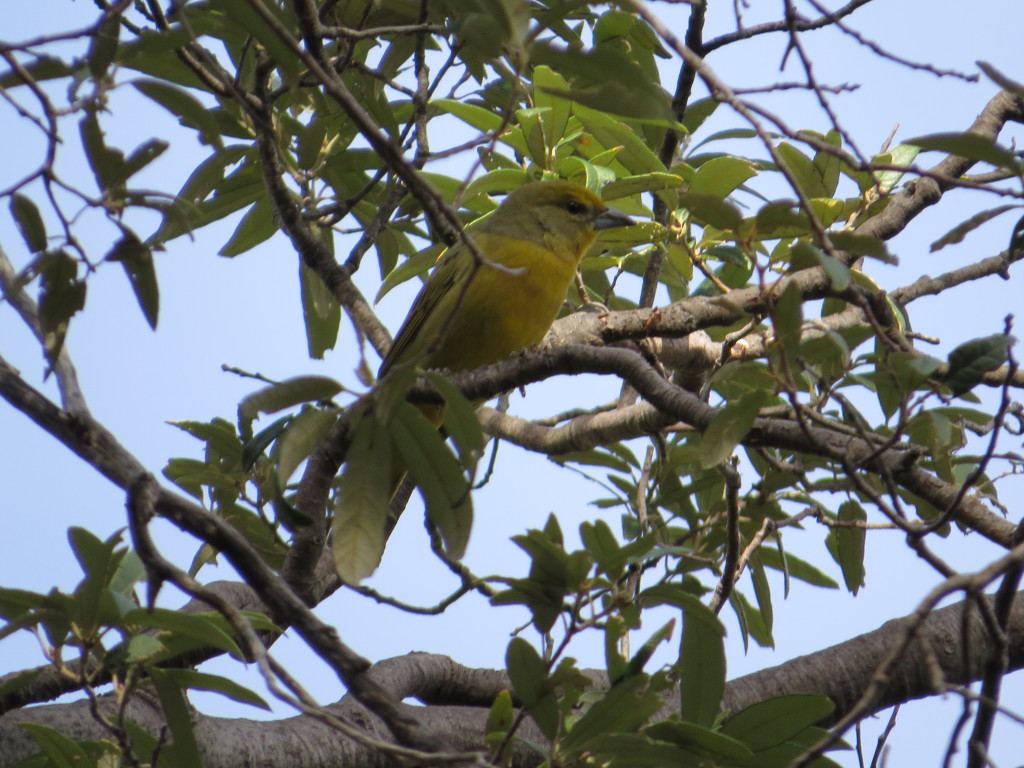 I really wanted to see the male Tommy found. Eventually I saw it, but it was not being cooperative at all.
I really wanted to see the male Tommy found. Eventually I saw it, but it was not being cooperative at all.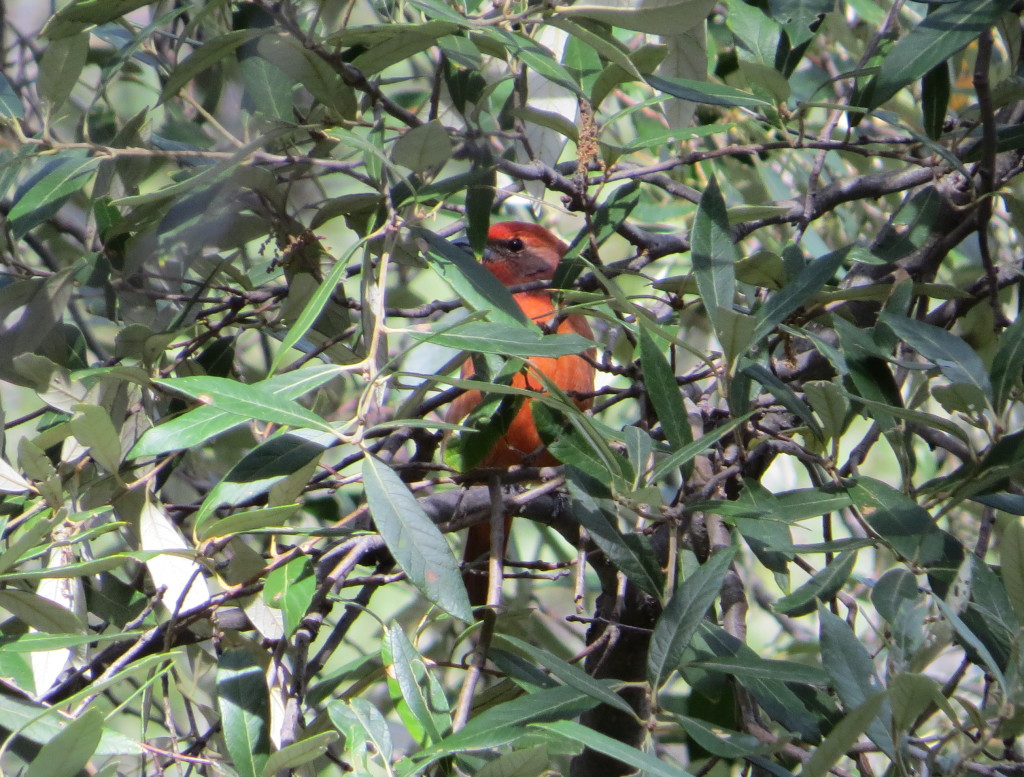
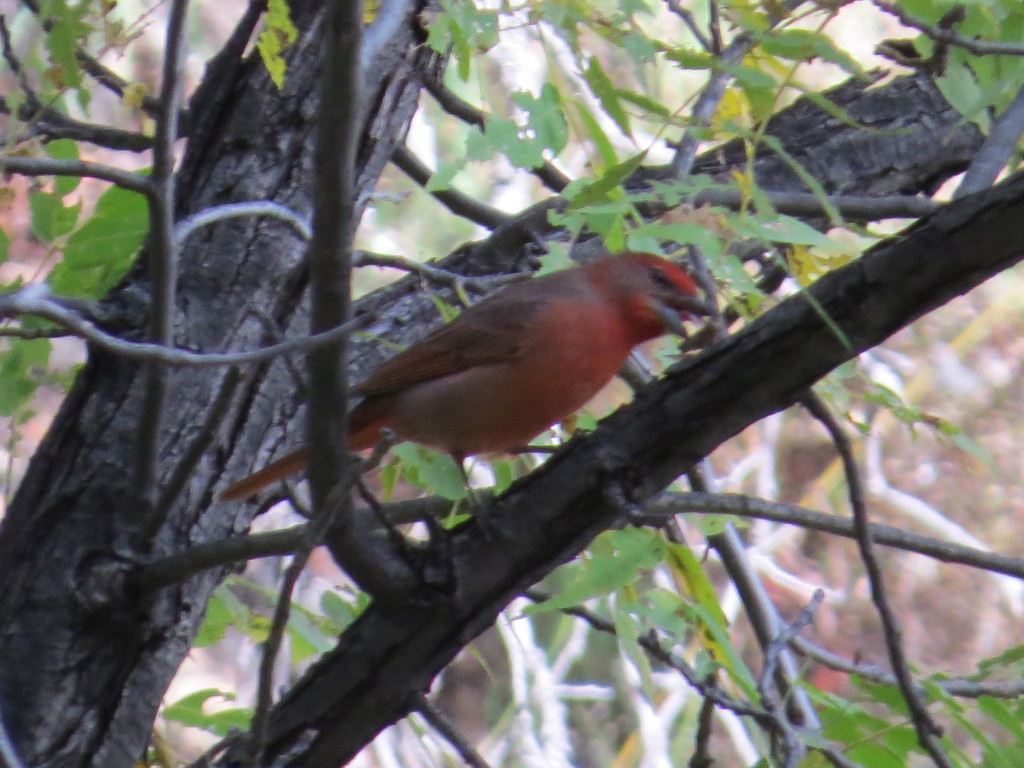 Tommy said that sometimes Tanagers will respond to a Northern Pygmy-Owl call. When he played it, a live Pygmy-Owl tooted back! Tommy took off up the canyon trail to see if he could locate it. I started soon after but then saw bright flash of yellow and black come across the blue sky–Scott’s Oriole! What a looker it was! It landed at the very top of a tree offering me nothing but butt views. It’s a pretty nice-looking butt, anyhow.
Tommy said that sometimes Tanagers will respond to a Northern Pygmy-Owl call. When he played it, a live Pygmy-Owl tooted back! Tommy took off up the canyon trail to see if he could locate it. I started soon after but then saw bright flash of yellow and black come across the blue sky–Scott’s Oriole! What a looker it was! It landed at the very top of a tree offering me nothing but butt views. It’s a pretty nice-looking butt, anyhow.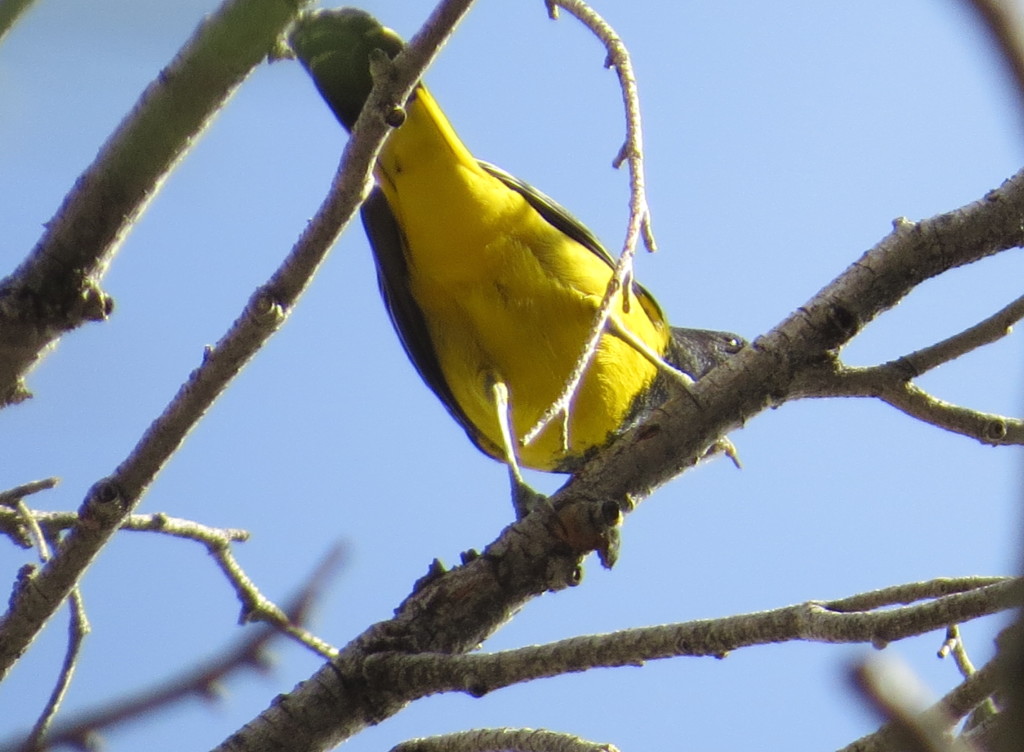 As I was jockeying for a position from which I could see the Oriole better, Tommy called out calmly, “Guys, Pygmy-Owl.” For some reason I thought this meant he was hearing it, and so I continued to keep working on the Oriole. A few seconds later, Tommy’s voice carried a little more urgency. An Owl lifer trumps an Oriole photo. Evan, Gordon, and I hustled up to where Tommy was. Sure enough, he had eyes on it. Wow, just wow.
As I was jockeying for a position from which I could see the Oriole better, Tommy called out calmly, “Guys, Pygmy-Owl.” For some reason I thought this meant he was hearing it, and so I continued to keep working on the Oriole. A few seconds later, Tommy’s voice carried a little more urgency. An Owl lifer trumps an Oriole photo. Evan, Gordon, and I hustled up to where Tommy was. Sure enough, he had eyes on it. Wow, just wow.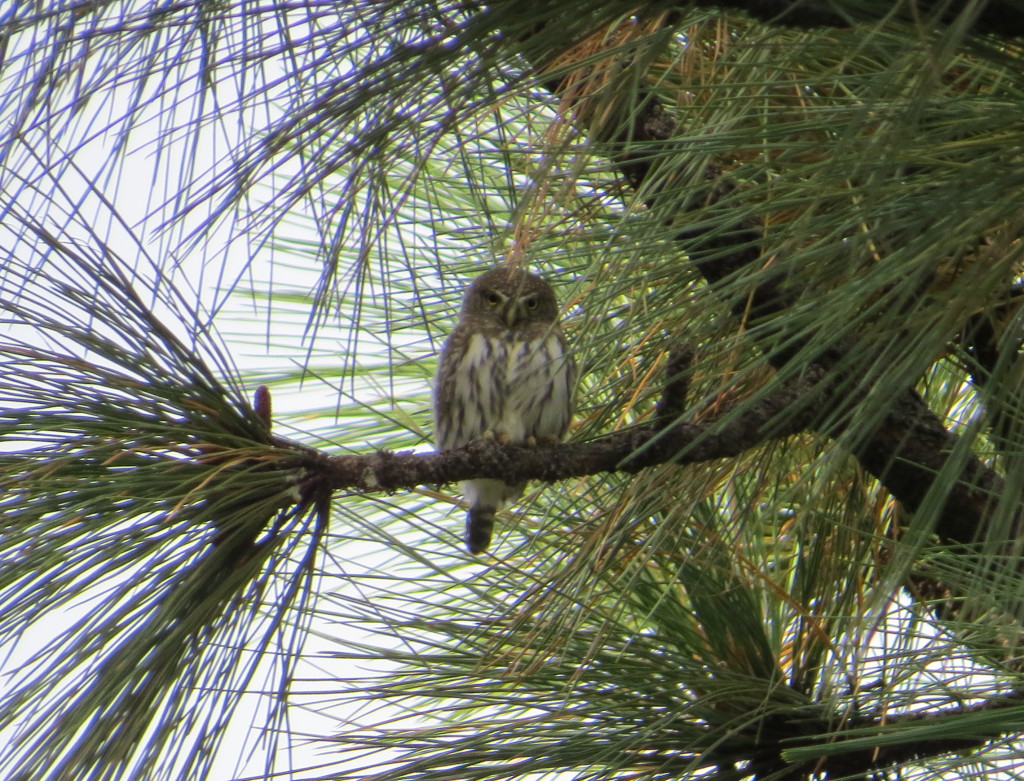
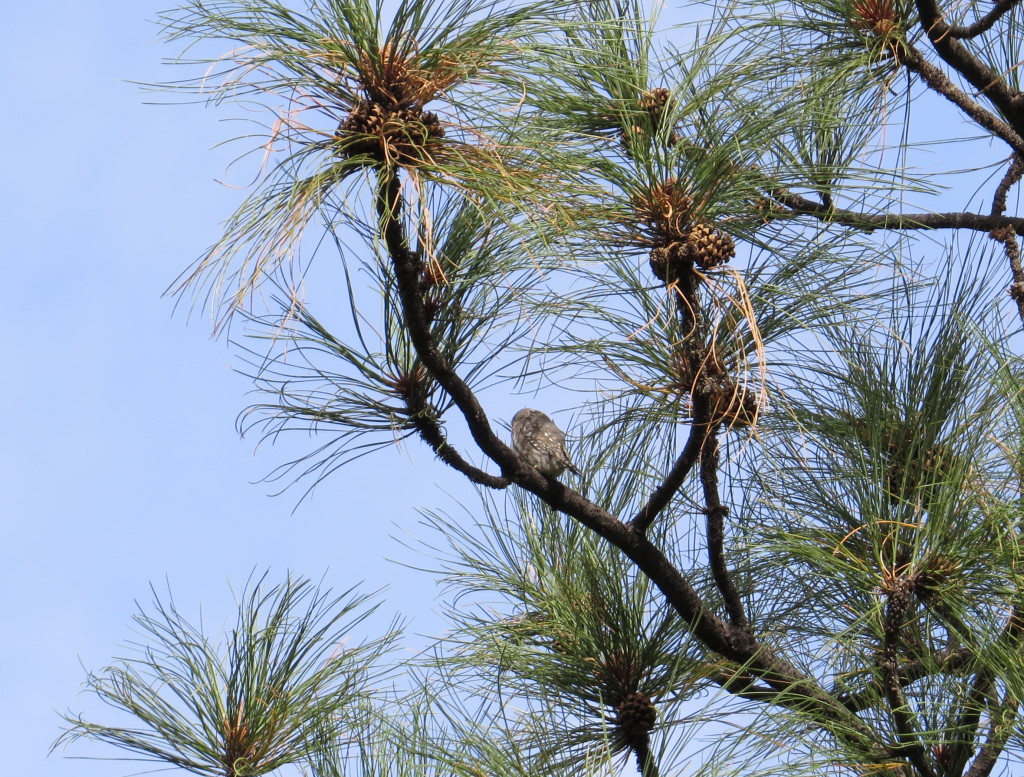 This was such a fun life bird. I was not expecting this one on this trip. Excuse the numerous photos–I was, and still am, very excited about this sighting.
This was such a fun life bird. I was not expecting this one on this trip. Excuse the numerous photos–I was, and still am, very excited about this sighting.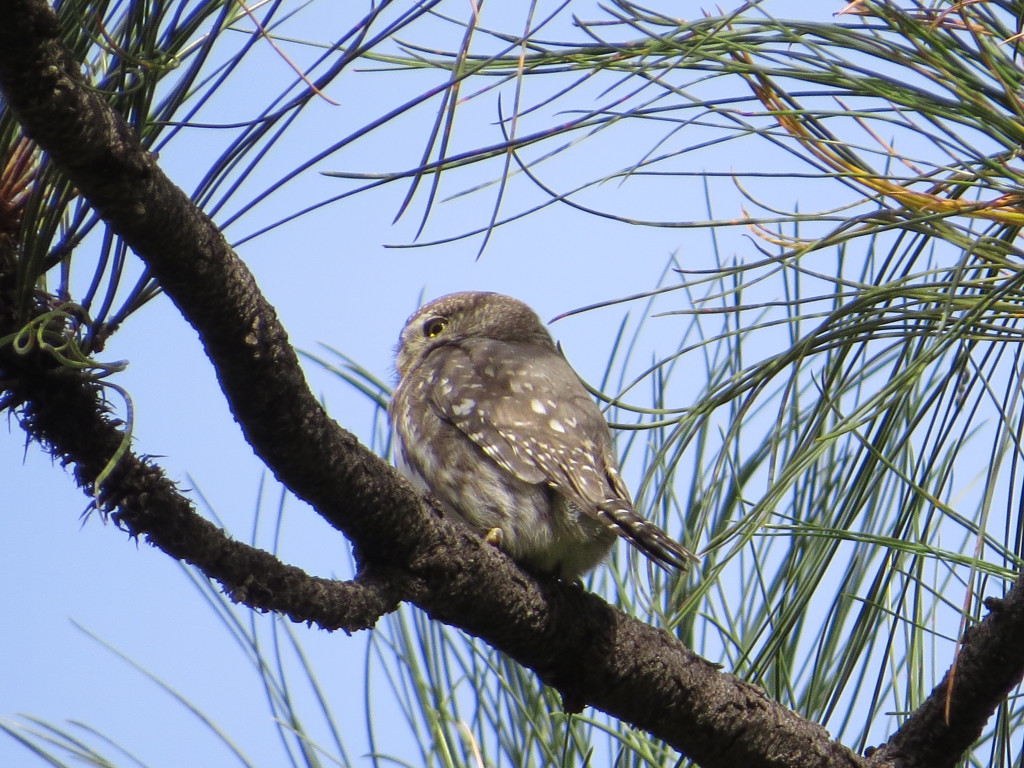
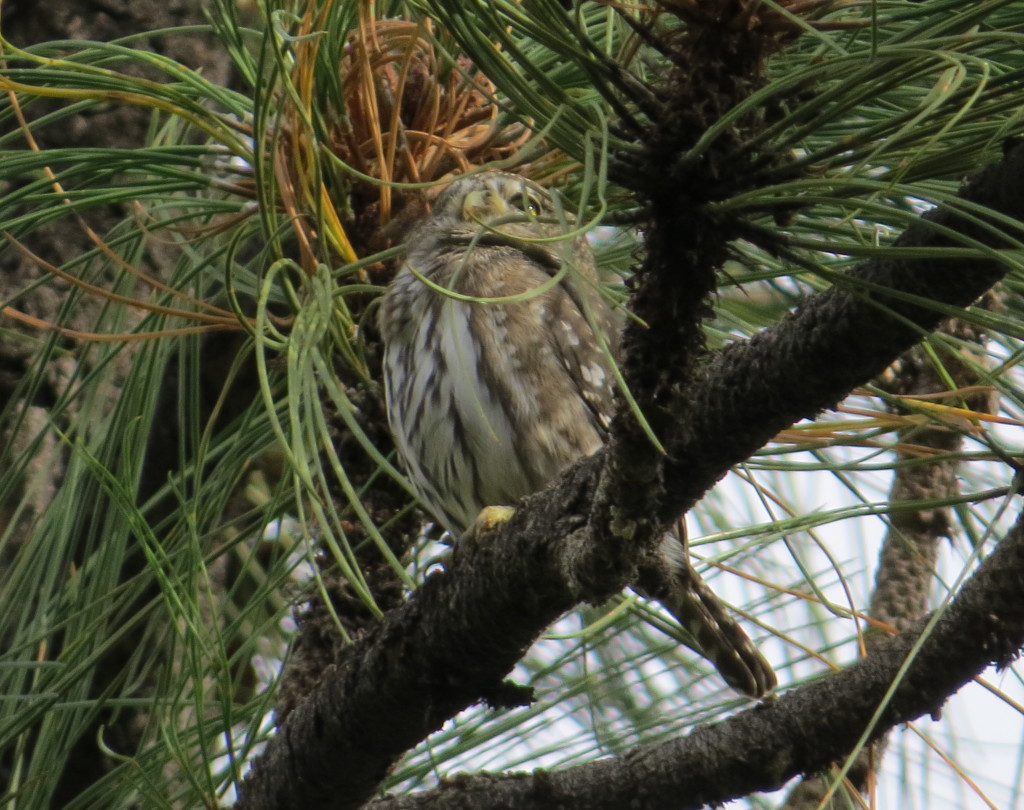
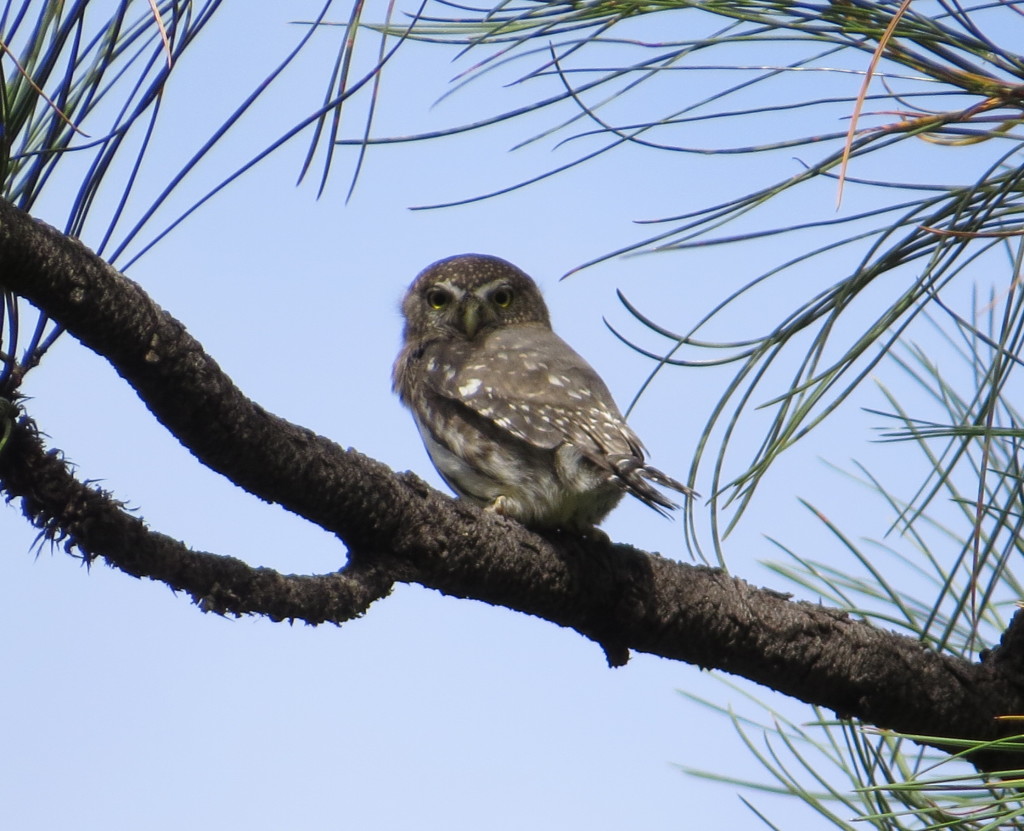 Time waits for no man, though, and neither do Rufous-capped Warblers. As I was photographing this cool Owl and trying for better angles, a Rufous-capped Warbler started singing nearby and Tommy was off again! In seconds Tommy got a visual on the bird and called me over. I’ve learned from Tommy and Gordon to first get a good look at a lifer with binoculars and then worry about a photo second. So that’s what I did. In no time at all, I also saw the Rufous-capped Warbler pop up for a second and got to see that amazingly yellow throat.
Time waits for no man, though, and neither do Rufous-capped Warblers. As I was photographing this cool Owl and trying for better angles, a Rufous-capped Warbler started singing nearby and Tommy was off again! In seconds Tommy got a visual on the bird and called me over. I’ve learned from Tommy and Gordon to first get a good look at a lifer with binoculars and then worry about a photo second. So that’s what I did. In no time at all, I also saw the Rufous-capped Warbler pop up for a second and got to see that amazingly yellow throat.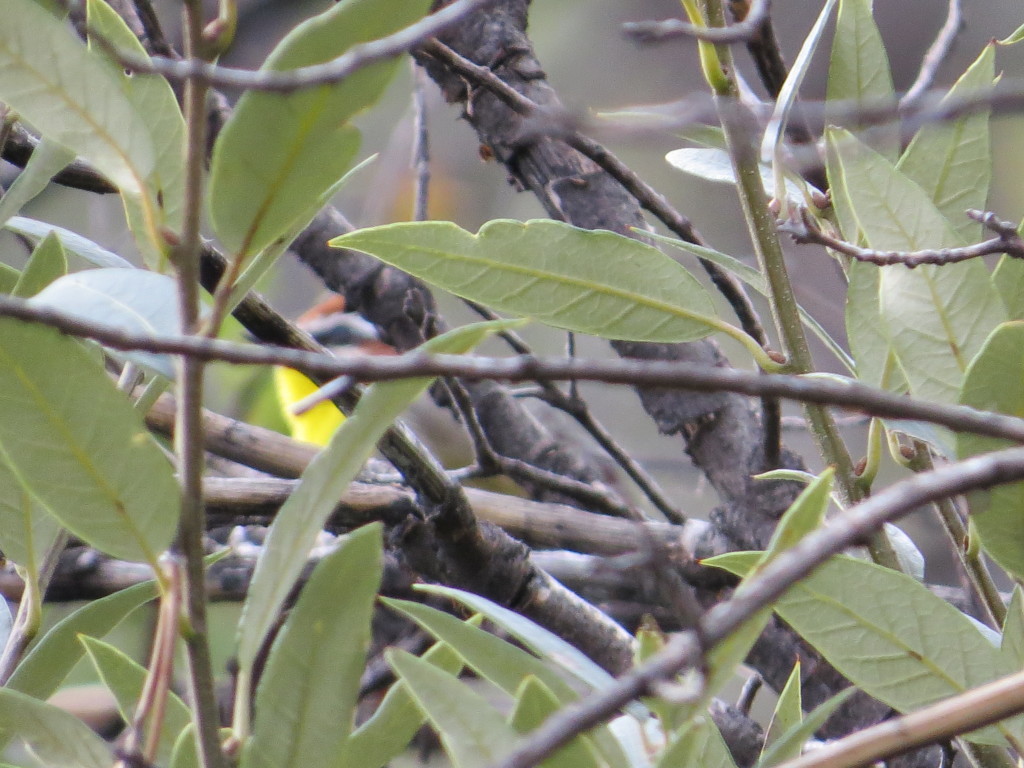
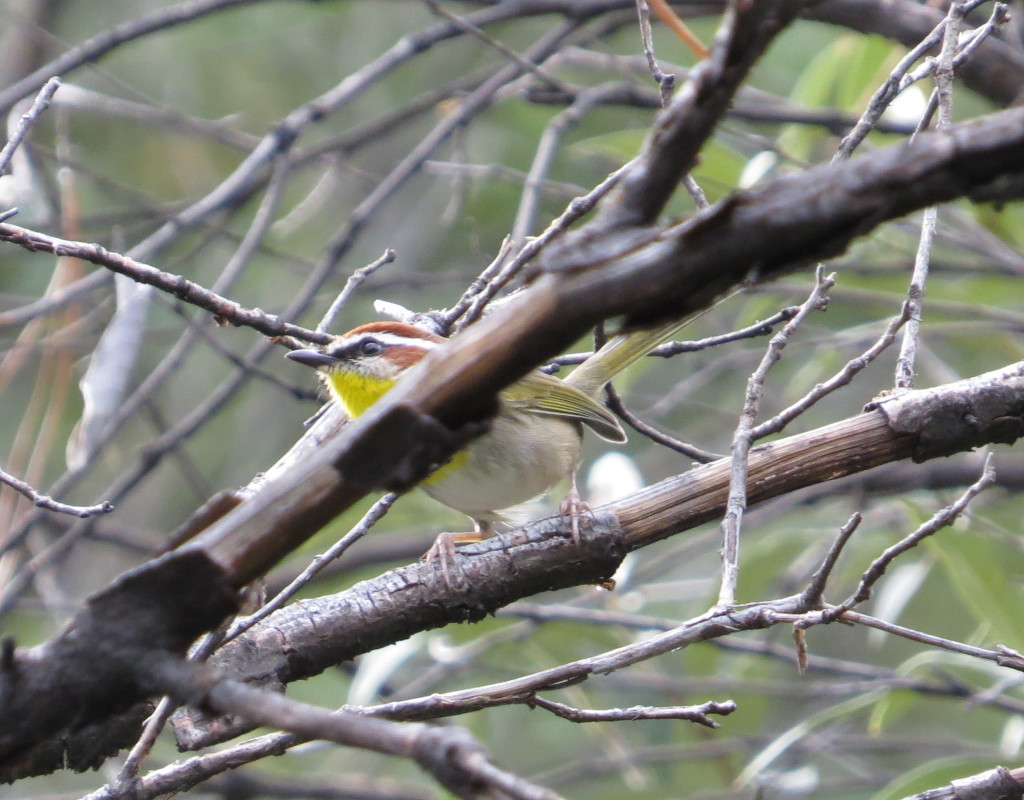
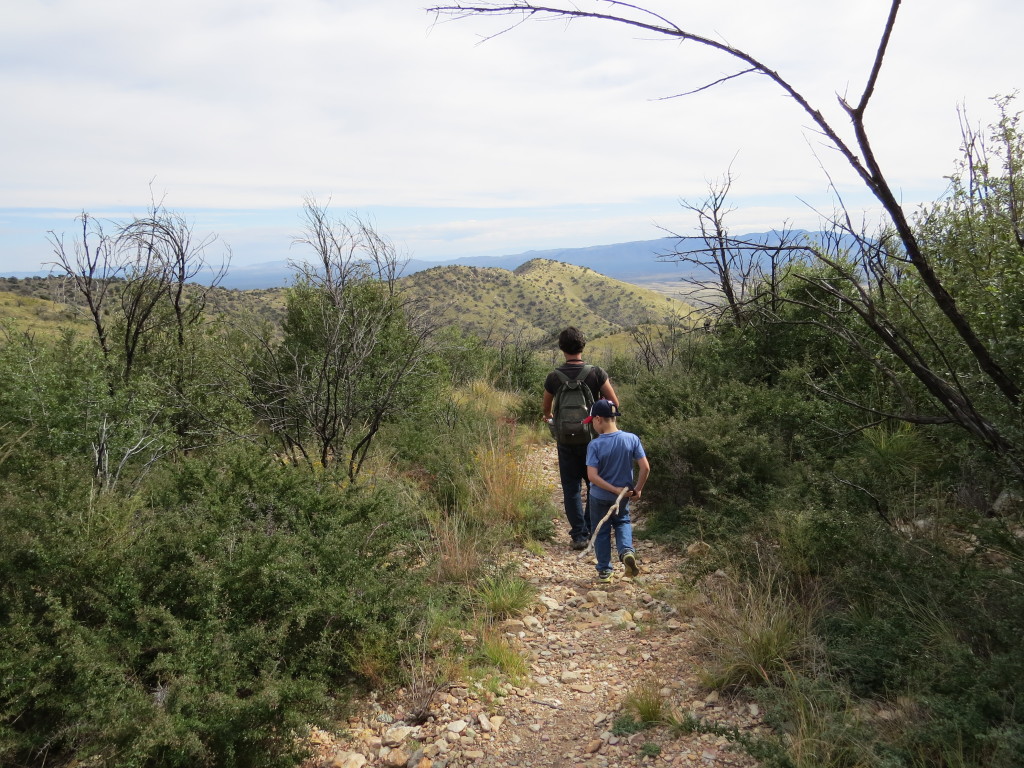 …and then go to next-door Miller Canyon and Ash Canyon for even more adventure! You don’t want to miss it–there will be coon dogs, guns, and yes, more cool lifers.
…and then go to next-door Miller Canyon and Ash Canyon for even more adventure! You don’t want to miss it–there will be coon dogs, guns, and yes, more cool lifers.